Art Hum Midterm
1/89
There's no tags or description
Looks like no tags are added yet.
Name | Mastery | Learn | Test | Matching | Spaced |
|---|
No study sessions yet.
90 Terms

Theodore Gericault
The Raft of the Medusa
1818-1819
The form/structure is a triangle
the skin tones are darkening moving up which contrast the colors of the blue sea
this helps create a sense of horror, drama, and tension
all the living people are eagerly seeking rescue, an aspiration for salvation
those on the bottom left are those who have lost hope and are already dead
bodies are depicted in great realism
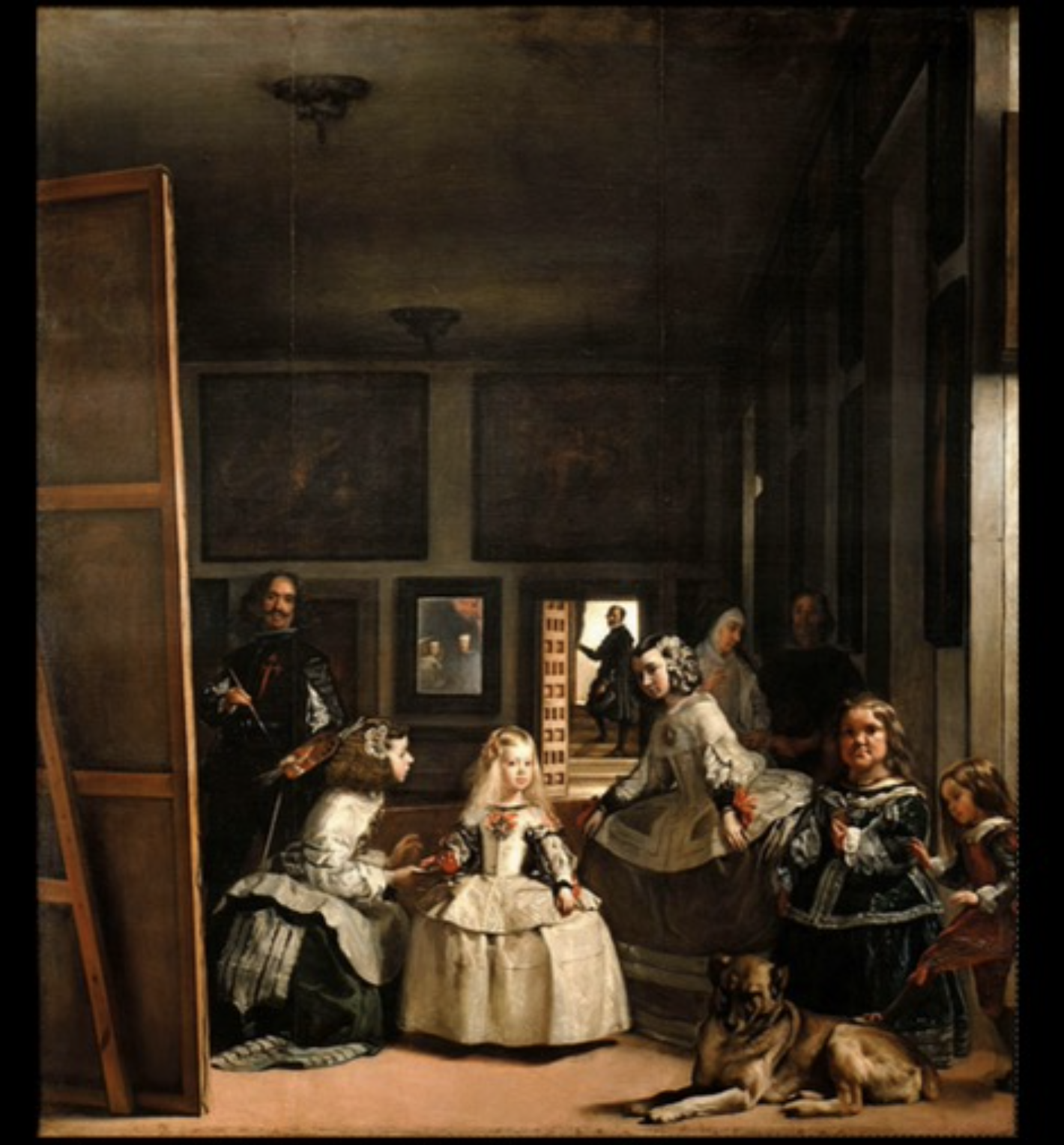
Diego Velazquez
Las Meninas
1656
tension between observing and being observed
piece about perspective
subjects in the painting are the ones being observed
the king and queen which should be the stars are put in the mirror as small figures
it constitutes you as a king or queen as through the mirror since you are looking at it externally - but you are not a king
the mirror and door creates a space that recedes - depth illusion
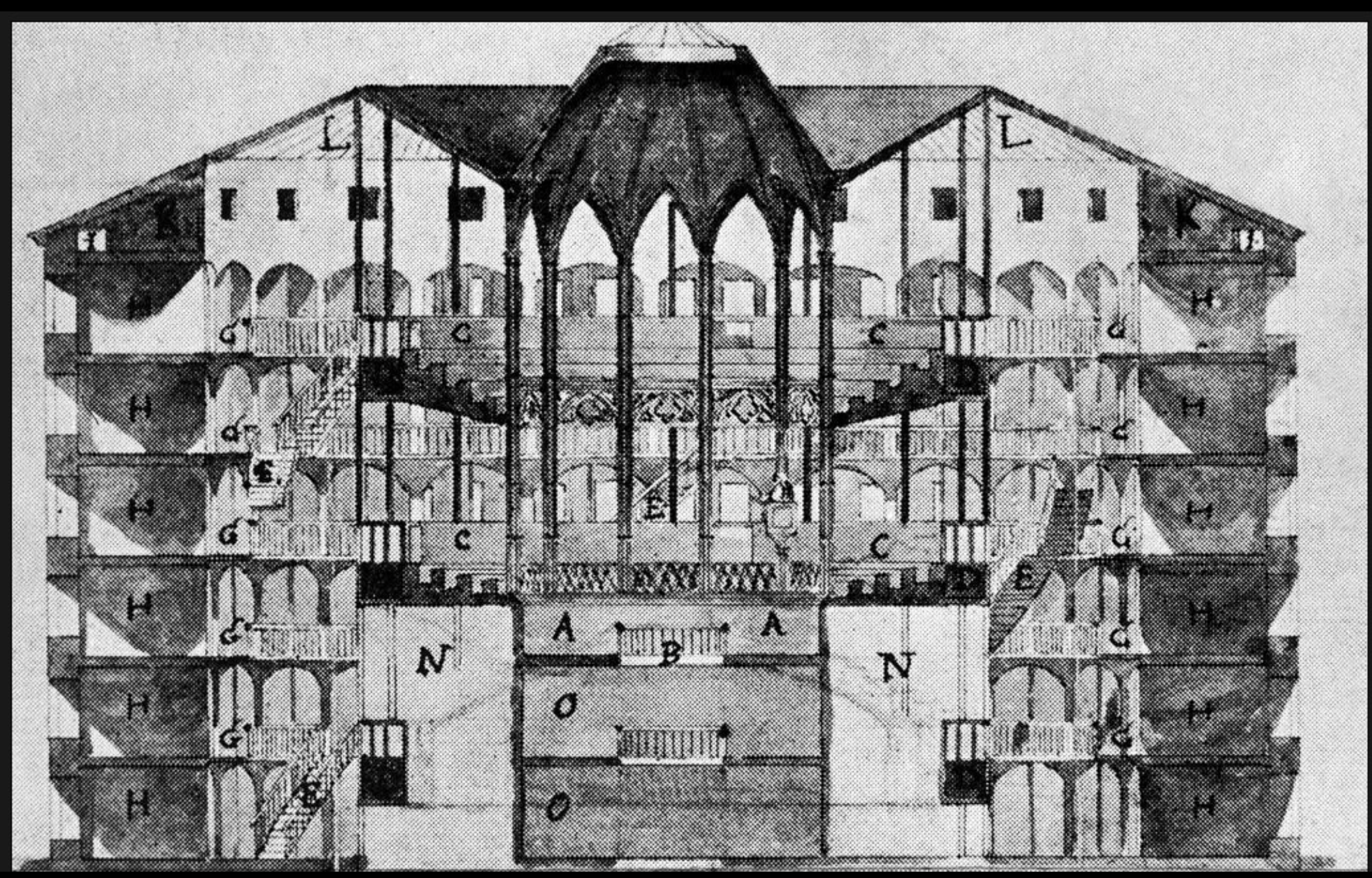
Jeremy Bentham
Panopticon
1787
works in a way that you never know if you are being watched
all cells are facing a guard tower, so the guard can see you but you can’t see them
this creates a fear which prevents you to commit crimes
a discipline because you are self-regulating because of fear of punishment
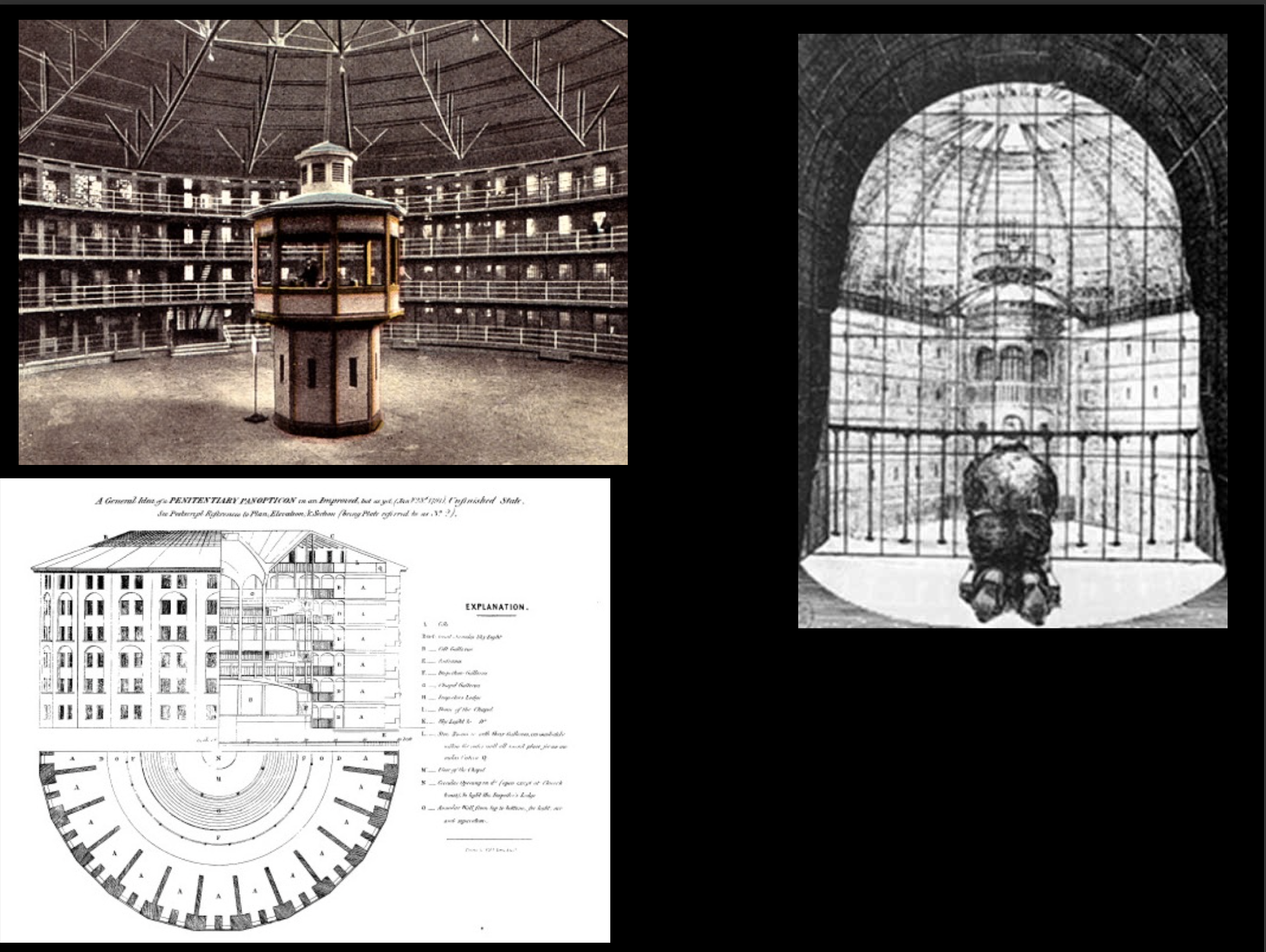
Panopticon
circular prison with cells arranged around a central well
prisoners can be observed at all times
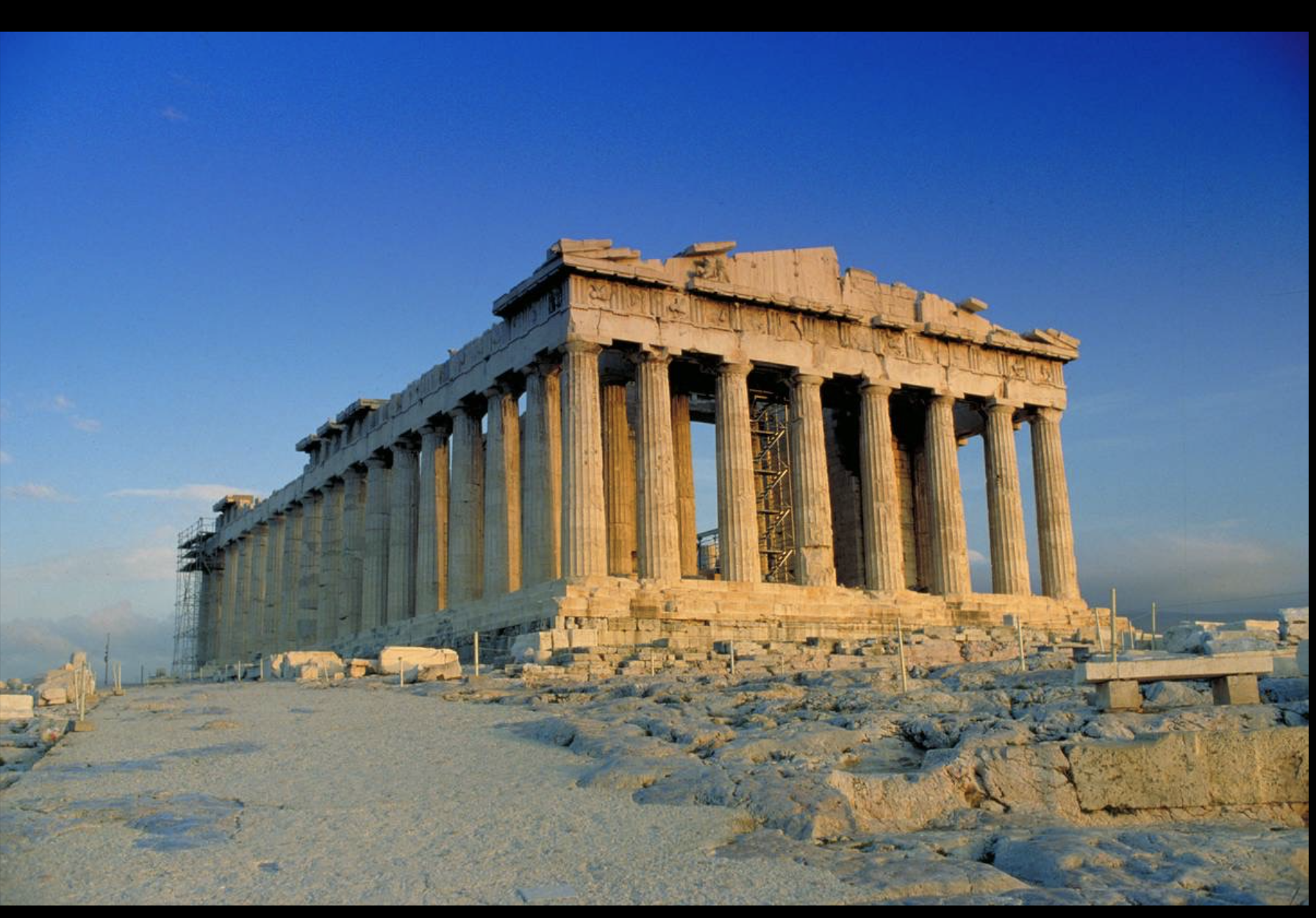
Parthenon
447 - 432 BCE
Architects Iktinos and Kallikrates
Overseen by Pheidias
Athenian Exceptionalism
every metope is carved
doric order
post-and lintel system
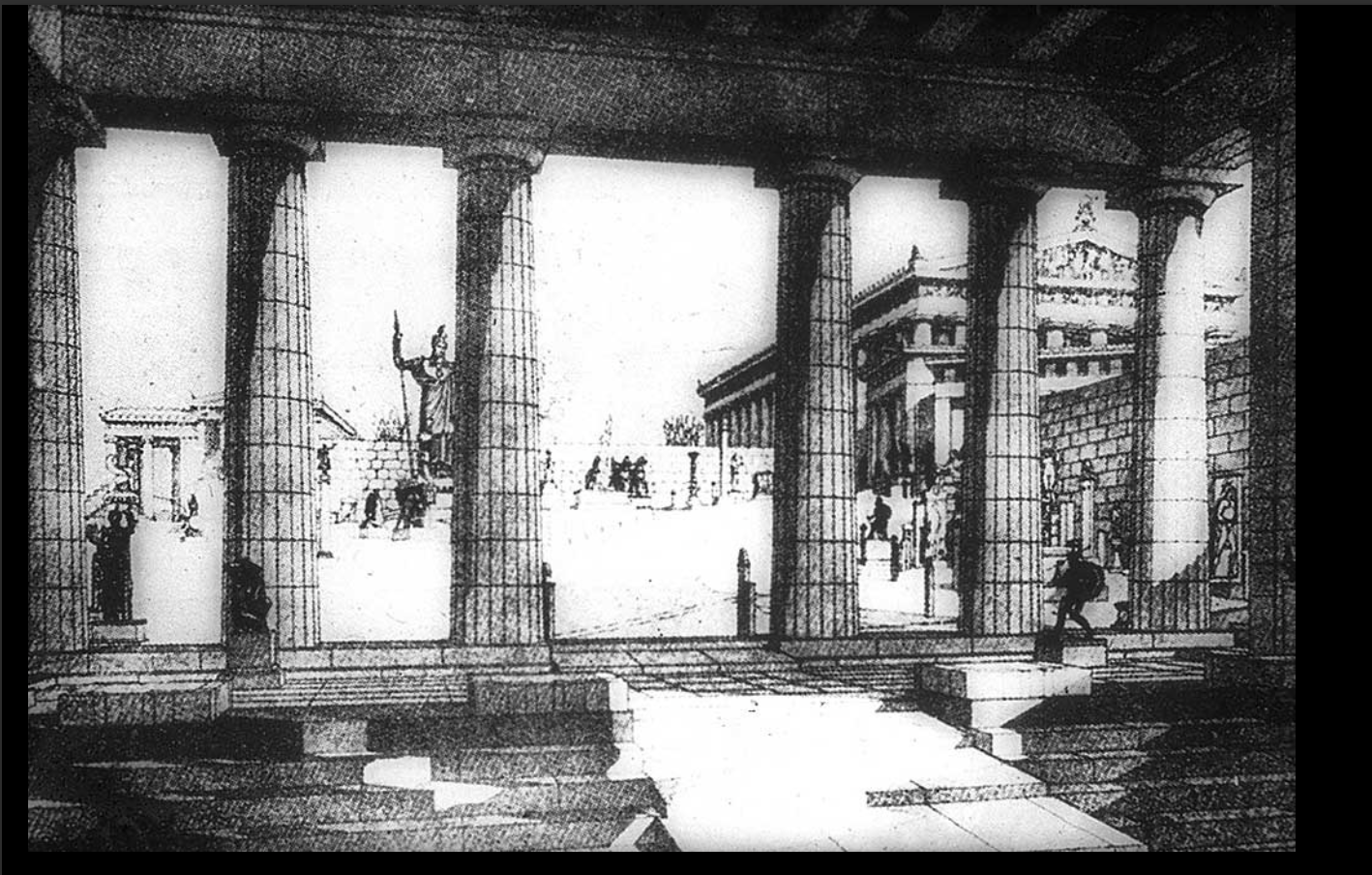
Architect: Mnesikles
Propylaia
437 - 432 BCE
Acropolis is a site of religious worship
bronze statues outside
there’s a path that you can take to the statues
politics of sequencing
power is something that is sequenced
¾ view- don’t get to see entire thing
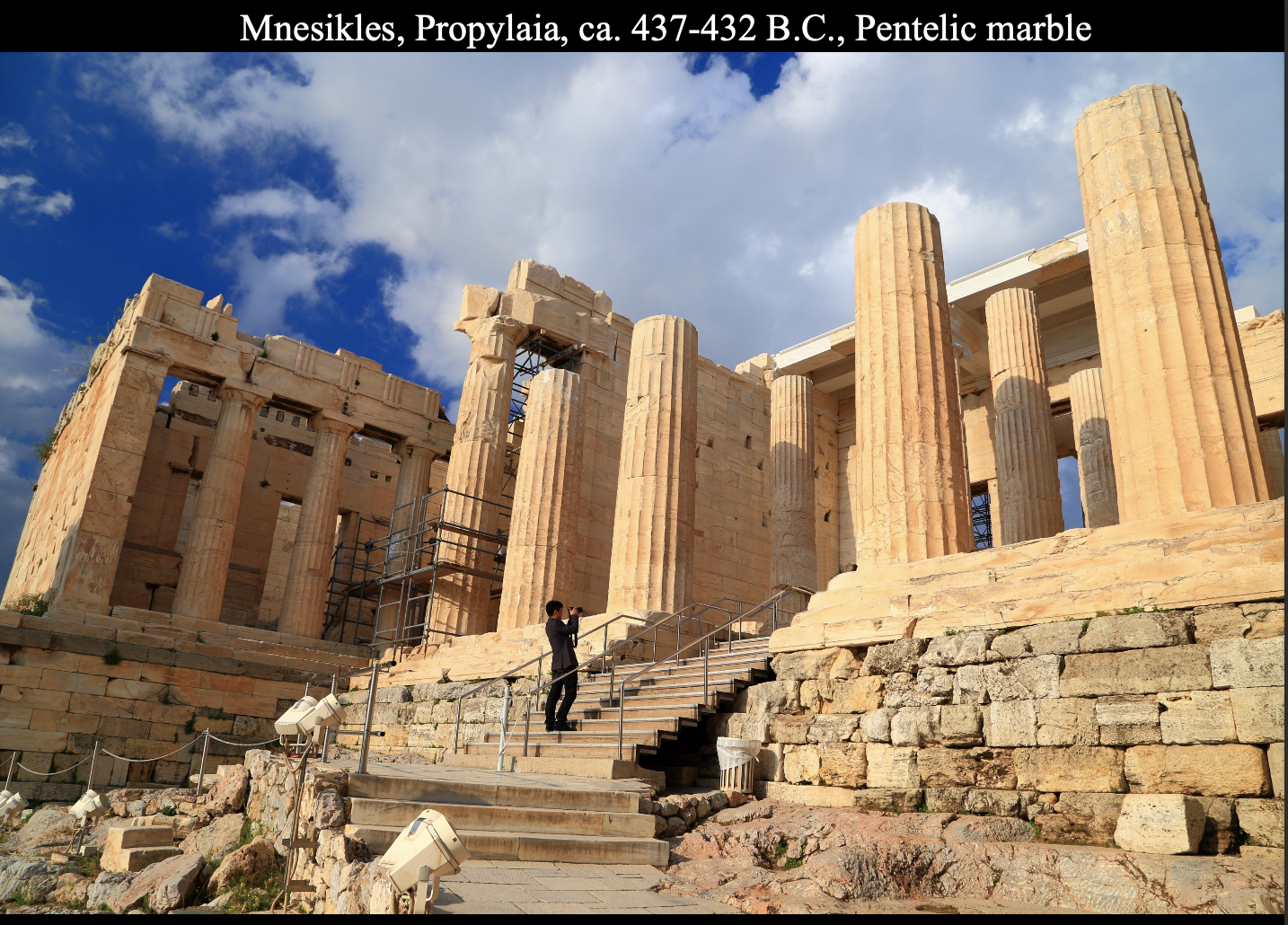
Architect: Mnesikles
Propylaia
437 - 432 BCE
physically elevated —> privileged, elevate status
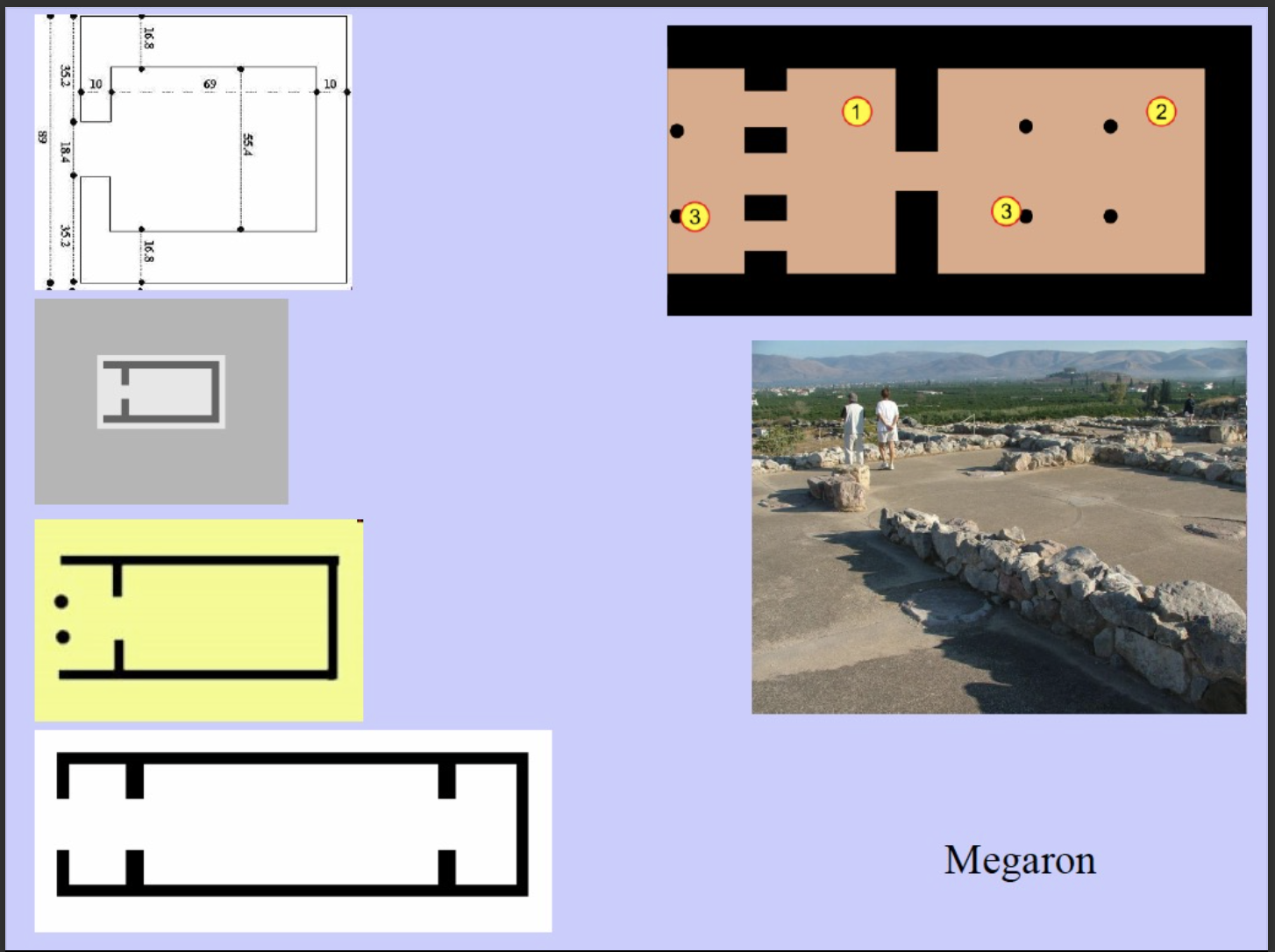
Megaron
first architectural program where a series of typologies that architects use to develop a space
basic setting for a family’s house
in Ancient Greece and the Middle East, architectural form consisting of an open porch, a vestibule, and a large hall with a central hearth and throne
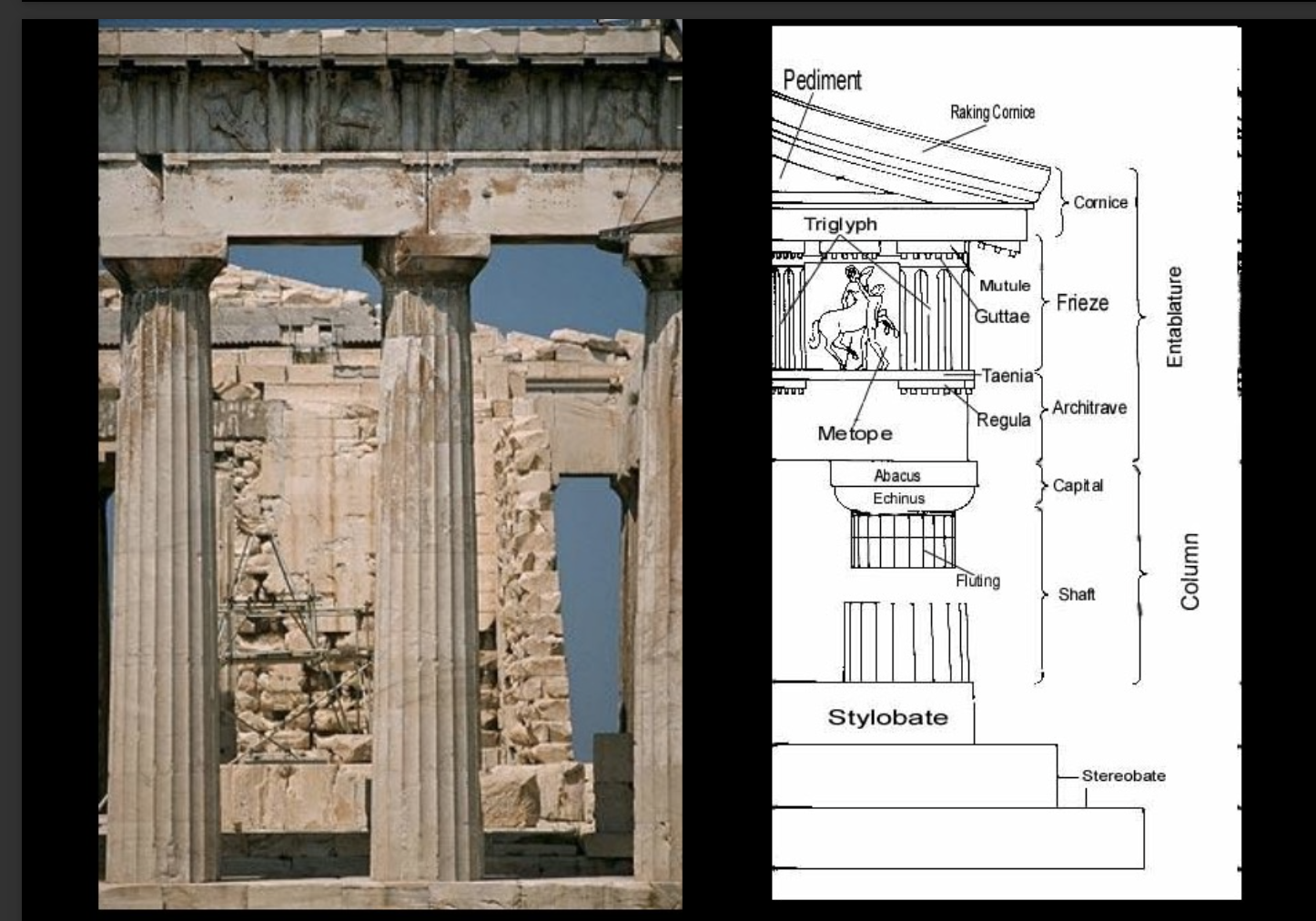
Doric Order
simple
rigid
strength
militaristic structure
Athens
Parthenon exterior - tough on outside
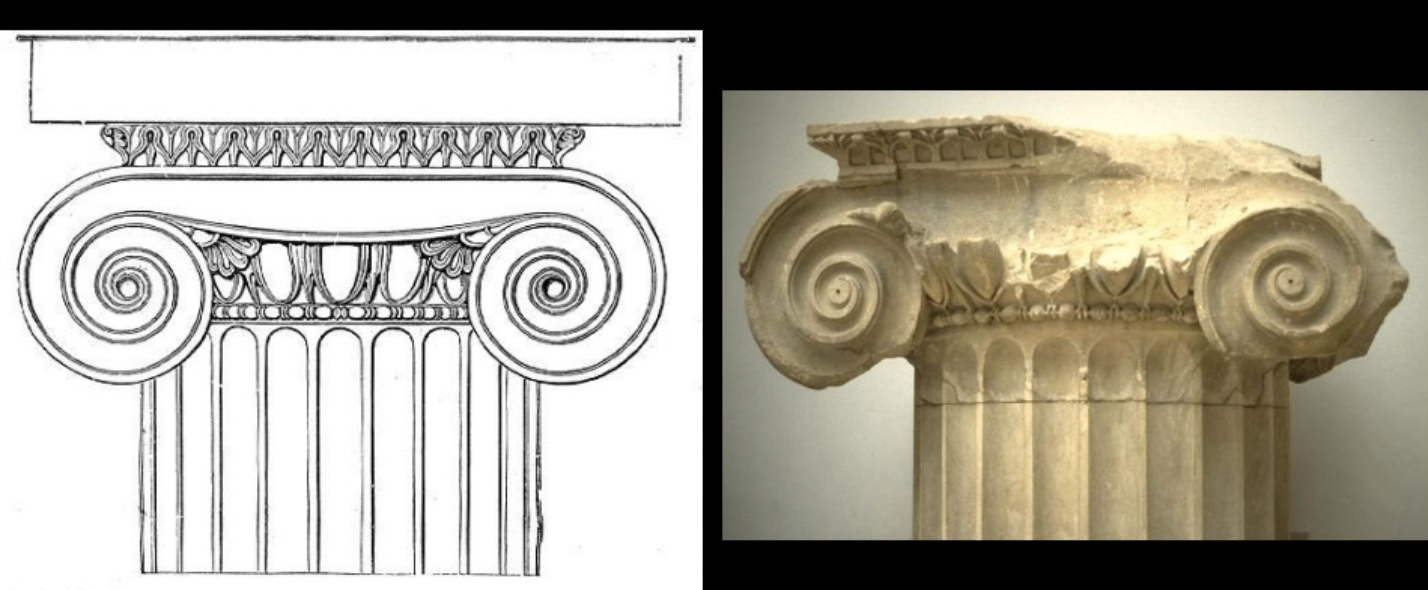
Ionic Order
Elaborate
Crafty
Scrolls
intelligence
philosophy
learning
Parthenon interior - intelligent on the inside
Columbia
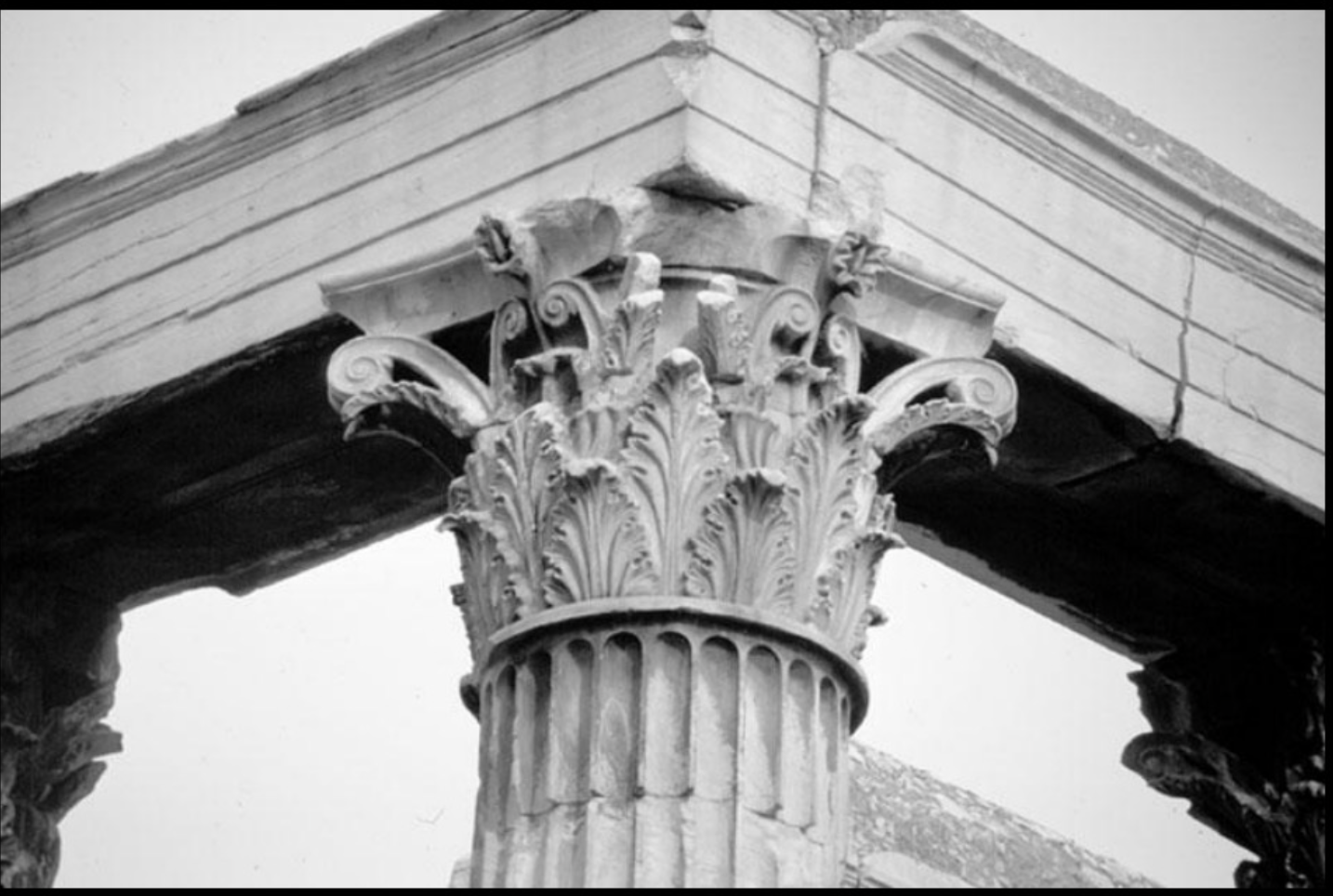
Corinthian order
success
flourishing
Athens
Temple of Olympian Zeus
Corinthian Capital
c. 170
NYSE - to support the idea that finance is timeless
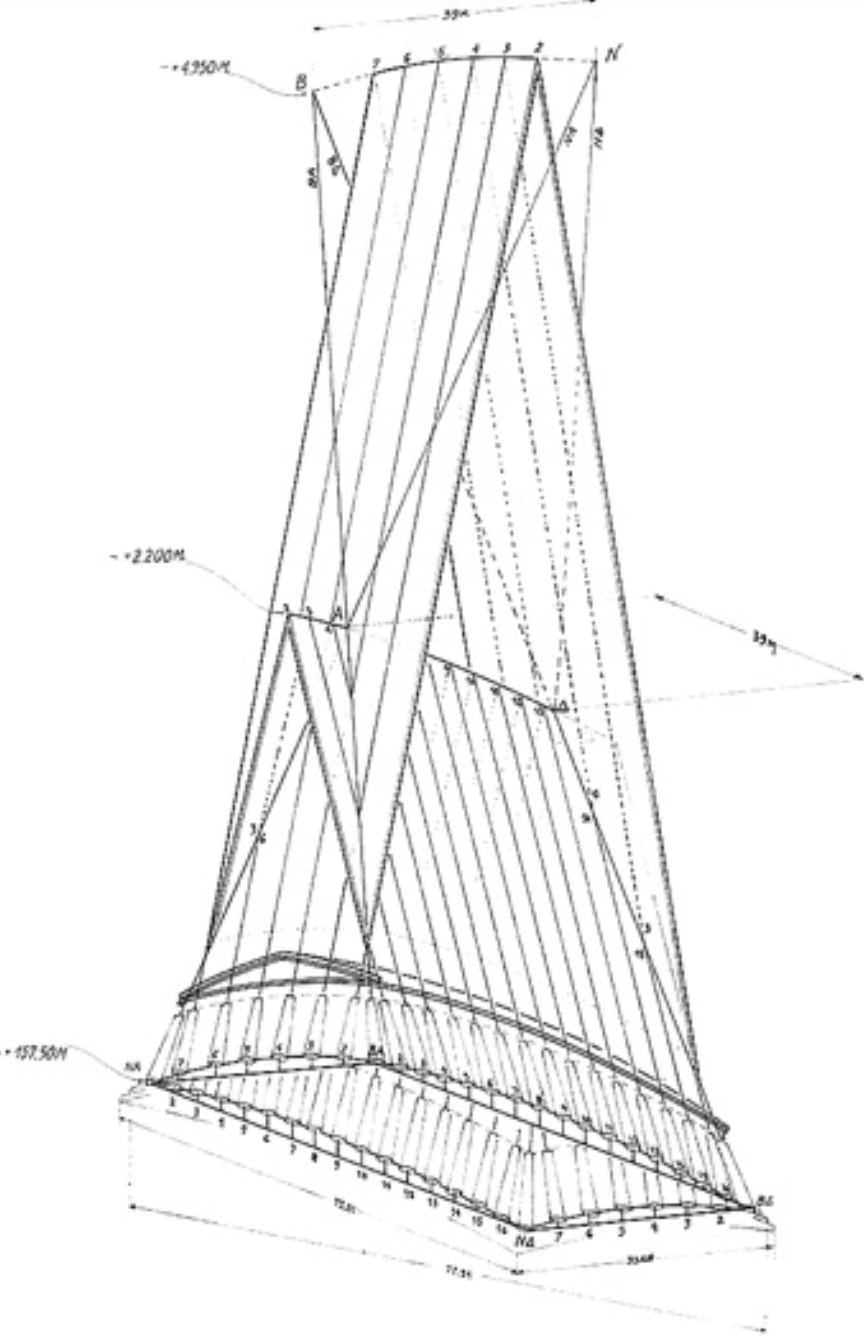
Parthenon (447 - 432 BCE)
Athens, Acropolis
optical refinements
the columns incline/tilt inwards and taper in gradual curve, not in a straight line
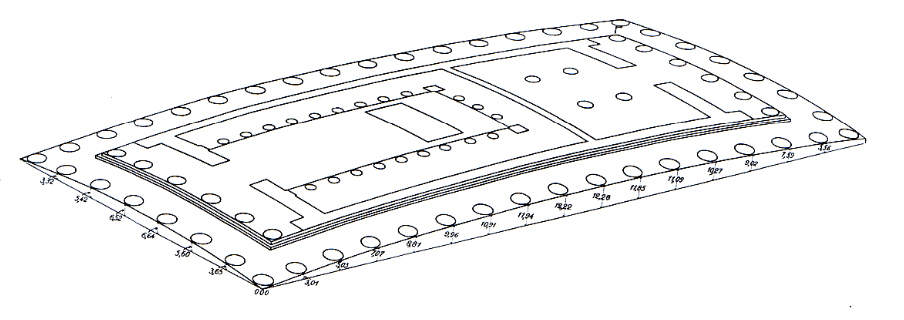
Parthenon (447-432 BCE)
Athens, Acropolis
plan of the parthenon
domed in two directions to reflect the true state of the temples base

Parthenon (447 - 432 BCE)
Athens, Acropolis
optical refinements
entasis: the slight convexity in the taper of the columns
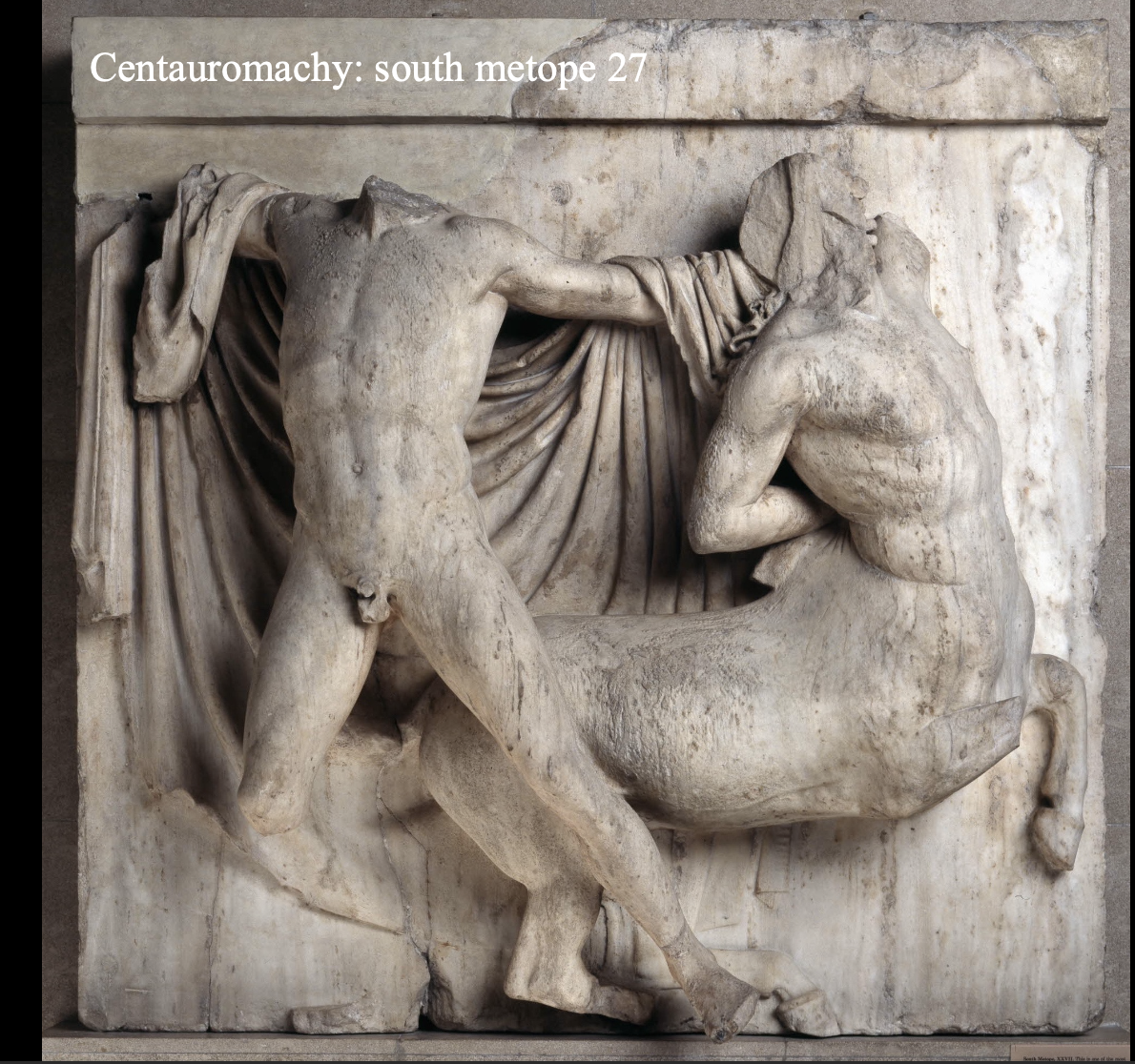
Parthenon metopes
Acropolis, Athens
ca. 440 BC
Phidias and other artists
South Metope 27
Centauromachy
Humans vs. animals
Can see idealized body
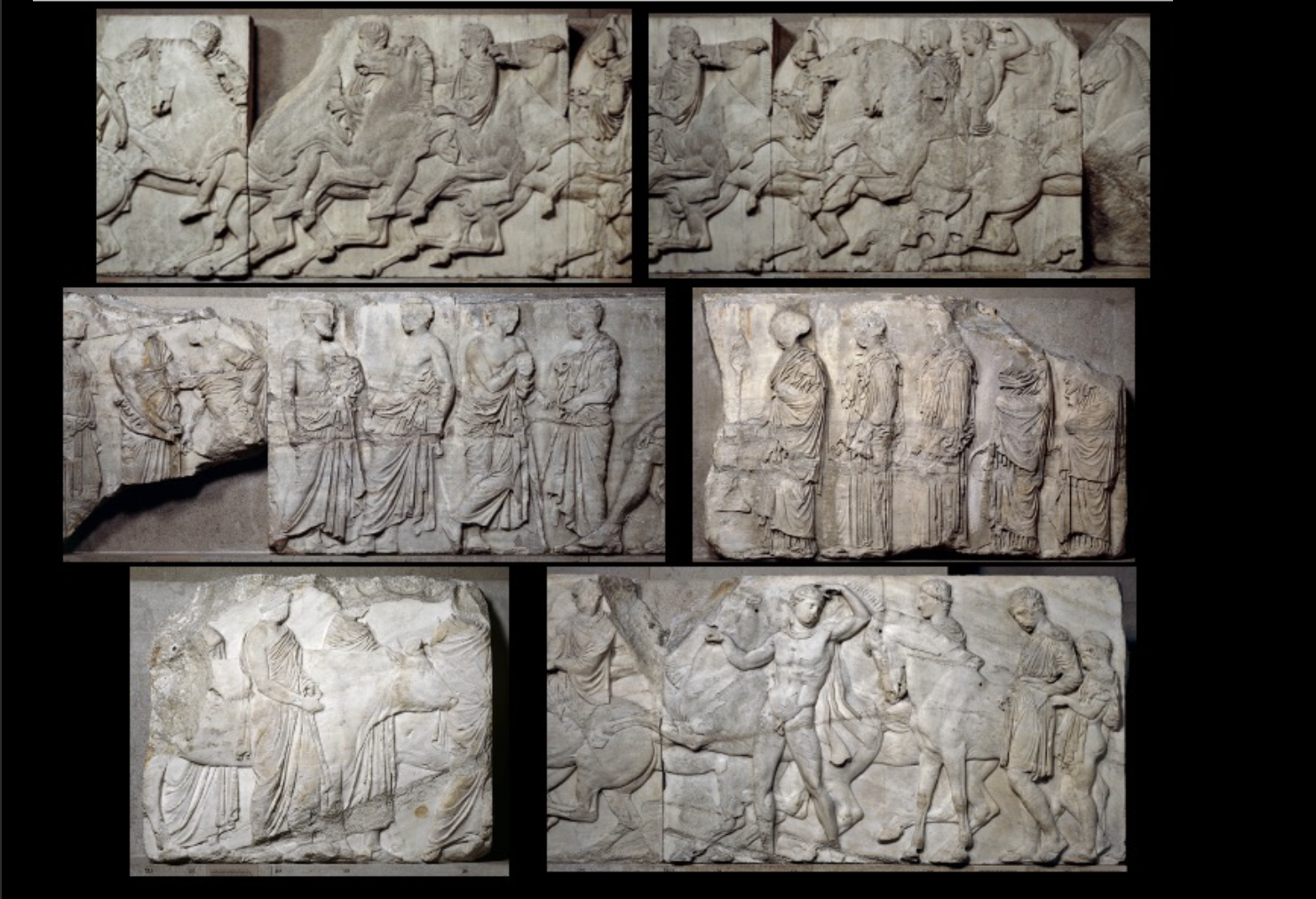
continuous ionic frieze
442 - 438 BC
part of the parthenon
no satisfactory angle for which any human eye could fully appreciate/examine image —> divine viewership
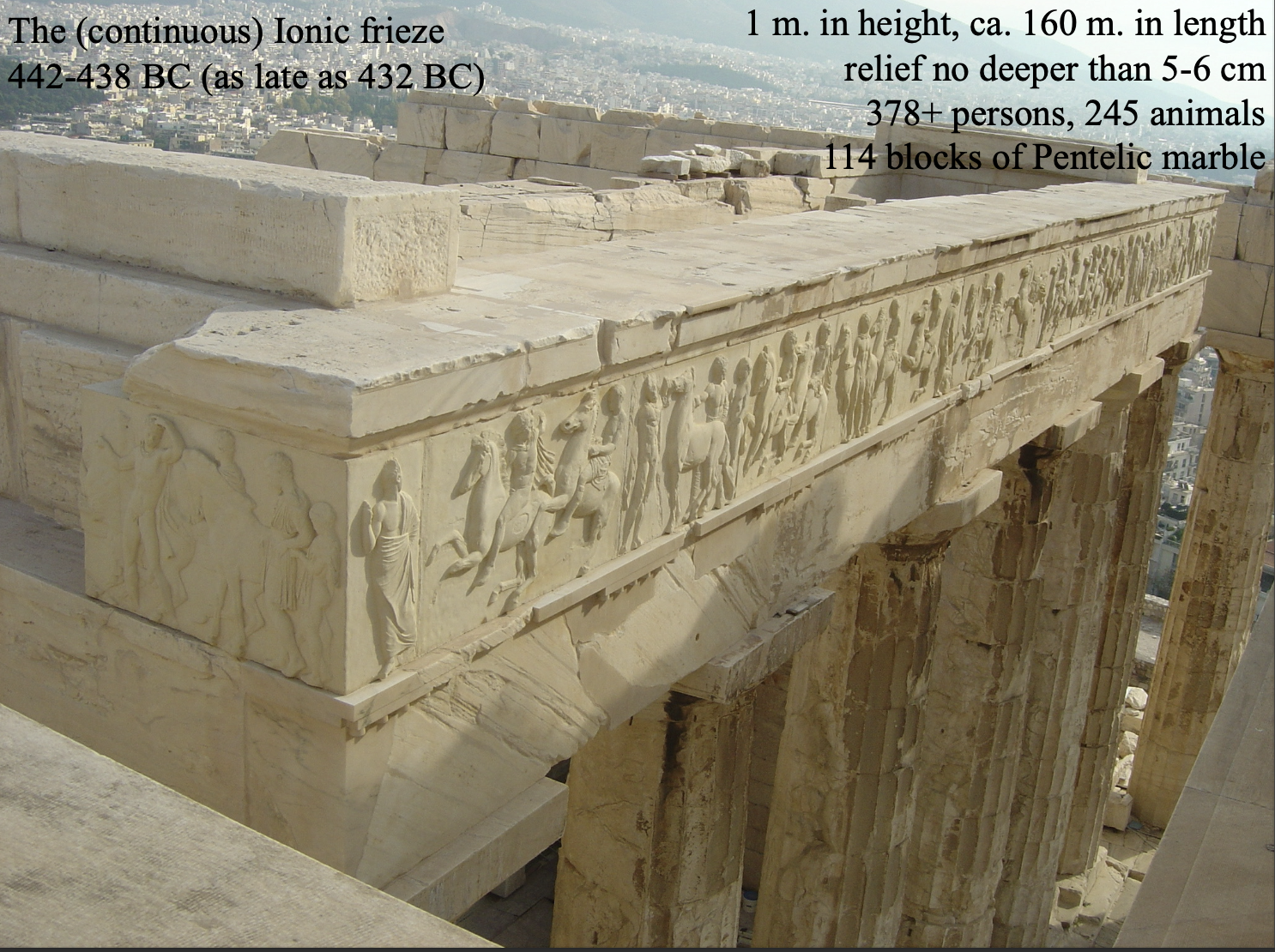
continuous ionic frieze
442 - 438 BC
1m in height
160 m in length
relief no deeper than 5-6 cm
114 blocks of pentelic marble
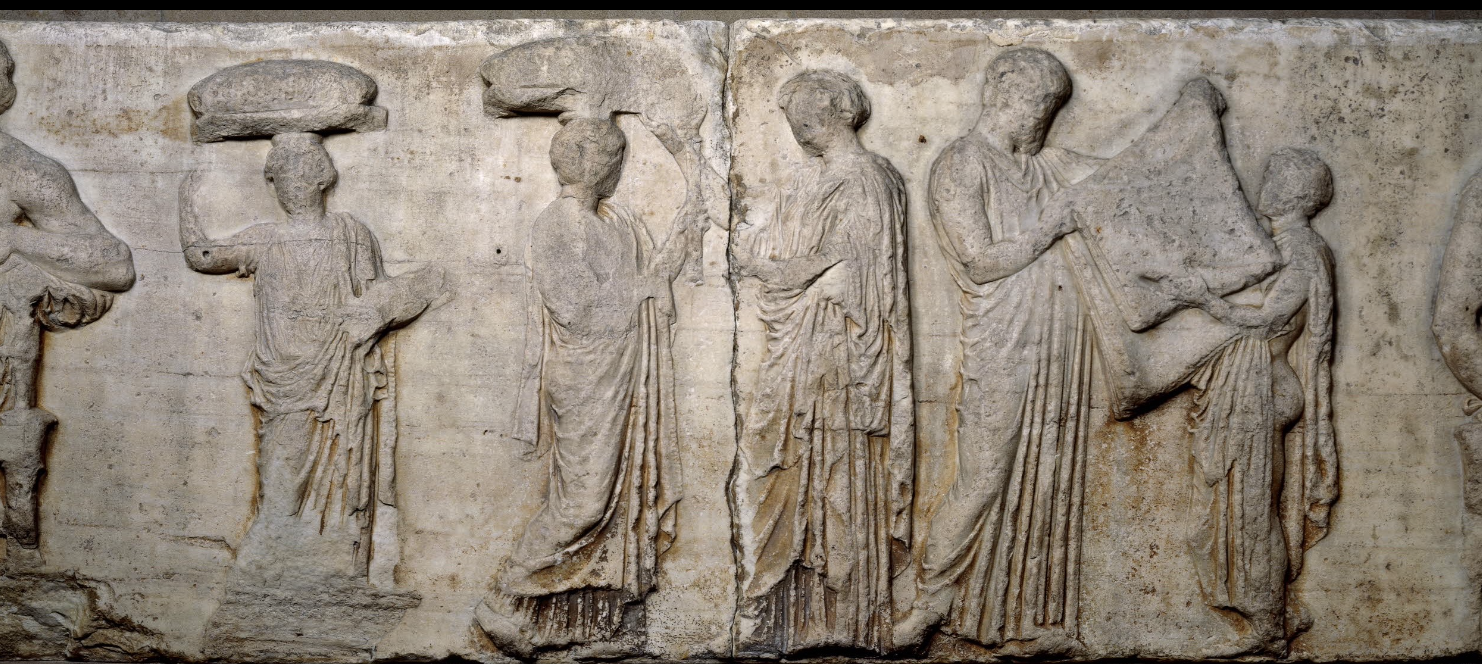
continuous ionic frieze
442-438 BC
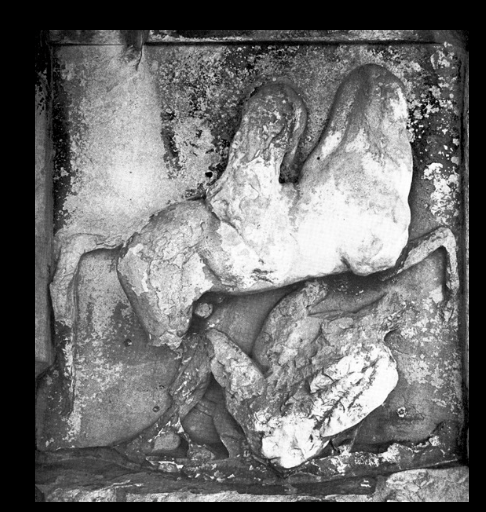
amazonomachy
mythological battle between ancient greeks and amazons of all female warriors
part of the parthenon metopes
Acropolis, Athens
447-432 BCE
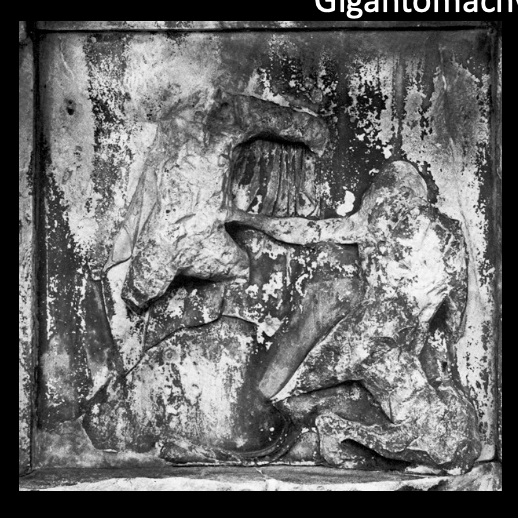
Gigantomachy
fighting giants
talking about scale
human vs. giants
part of parthenon metopes
Acropolis, Athens
447 - 432 BCE
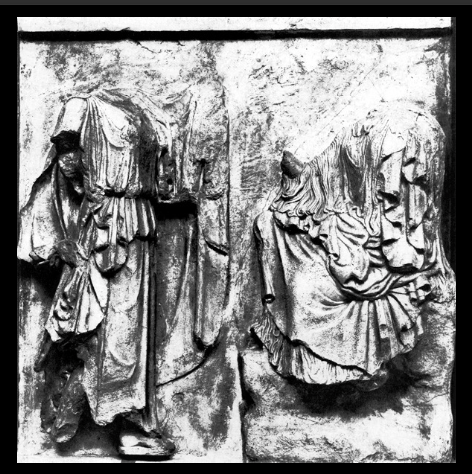
Trojan War
defining identity between people
part of the parthenon metopes
Acropolis, Athens
447-432 BCE
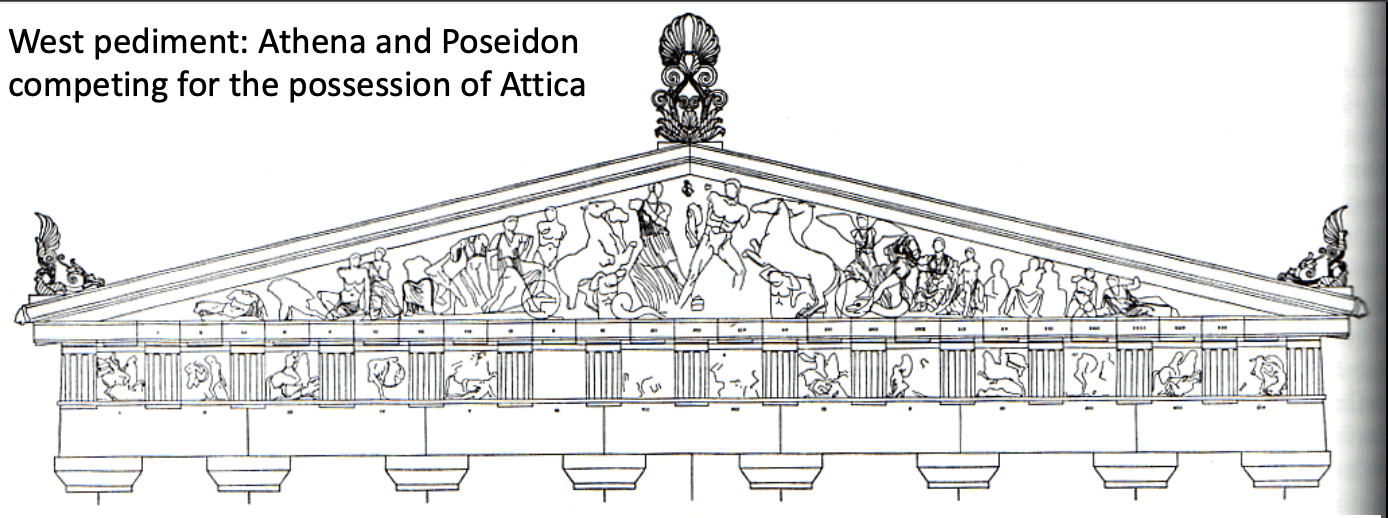
west pediment
Athena and Poseidon competing for the possession over the land of Attica
meant to be read from the top
Parthenon, Acropolis, Athens
438 - 432 BCE
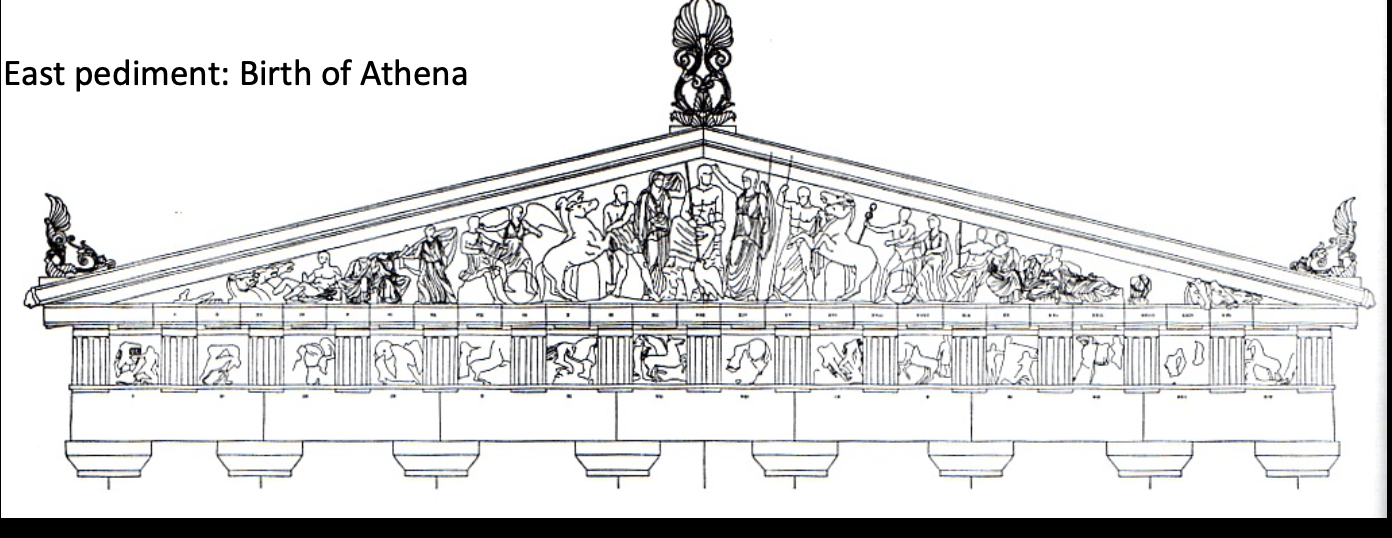
east pediment
birth of Athena
Parthenon, Acropolis, Athens
438-432 BCE
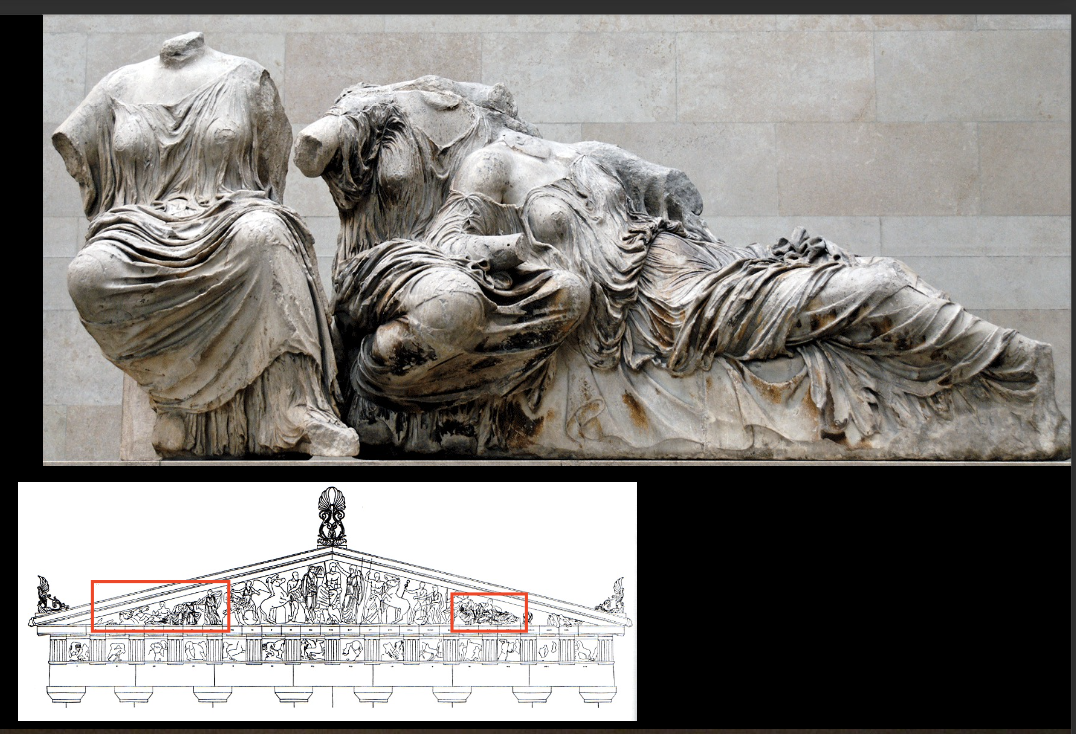
Parthenon, Acropolis, Athens
right side of East Pediment
Birth of Athena from the head of her father Zeus
447- 432 BCE
L to R Hestia, Dione, Aphrodite
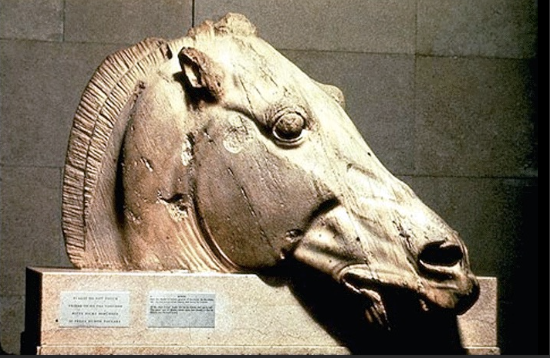
Parthenon, Acropolis, Athens
far right side of East Pediment
447 - 432 BCE
Right of Hestia, Dione, and Aphrodite
head of weary horse pulling the moon goddess Selene’s chariot
flaring nostrils and gaping mouth

Parthenon, Acropolis, Athens
left side of East Pediment
447 - 432 BCE
only pediment sculpture to survive with head intact
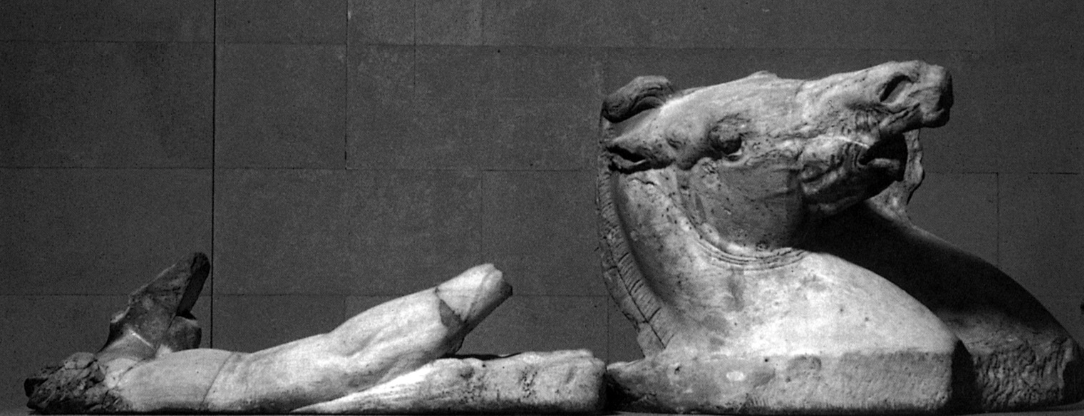
Parthenon, Acropolis, Athens
farthest left side of East Pediment
447 - 432 BCE
chariot of helios
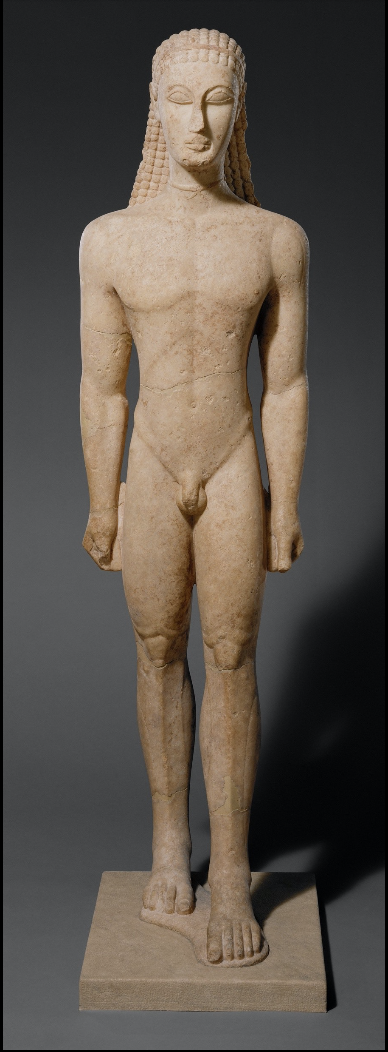
New York Kouros
590 - 580 BC
New York, MET
Archaic (more Egyptian)
purely conceptual
abstract/hieratic idealism: essence over reality
“idealized but not in this world”

Kritios Boy
480 BCE
Marble
Athens, Acropolis Museum
Early Classical
position of ponderation
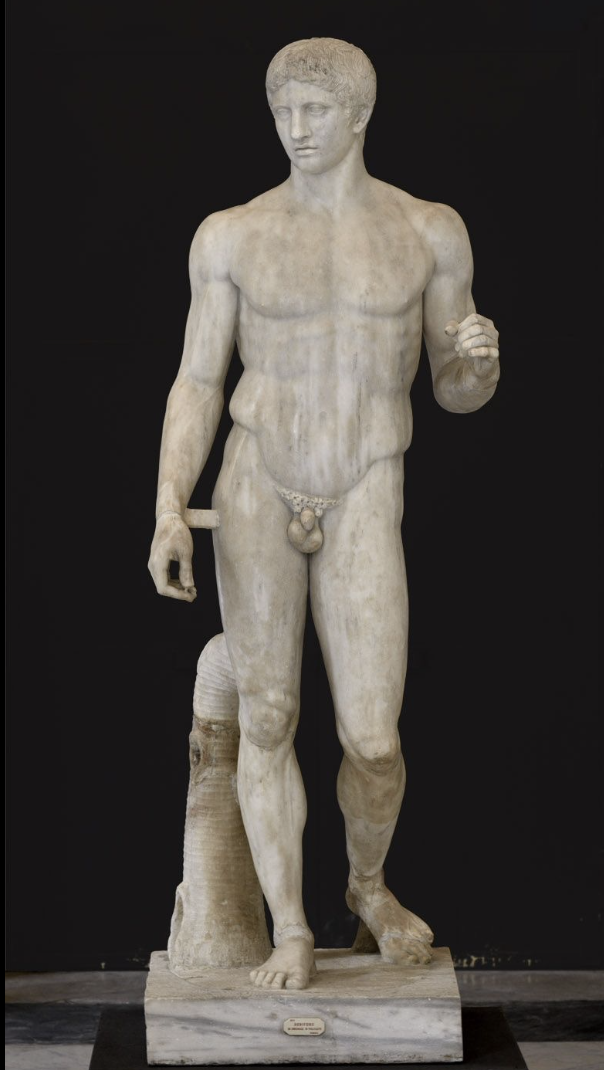
Doryphoros Polykleitos
450 - 440 BCE
Classical
Roman copy of a Greek bronze original
Naples, National Archaeological MuseumPosition of contrapposto
distribution of weight
one leg is straight and the other is relied
idealized naturalism: perfected reality
signifying that something more familiar to our own experience of bodies in the world
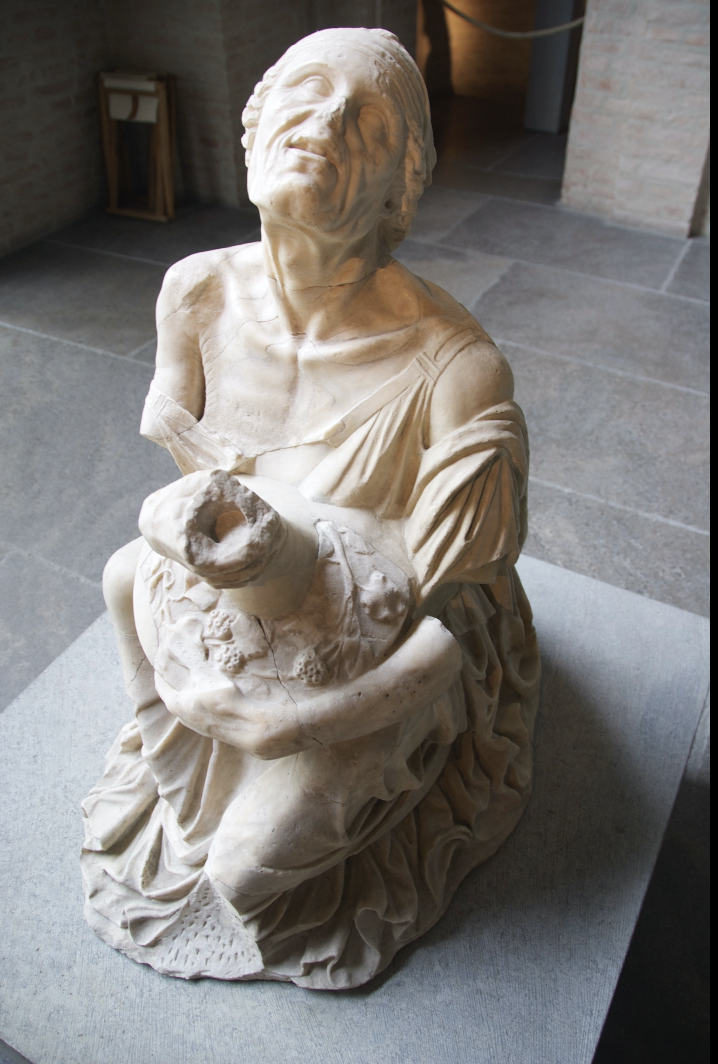
Drunk Old Woman
200 - 180 BCE
Roman marble copy of a Greek original Munich, Glyptothek
Hellenistic
realism and pathos
psychology, inflection, pathos, with emotion and eruption
quotidian or degraded reality

Laocoon
2nd century BCE - 1st century AD
Hellenistic
tortuous death Laocoon and his sons by snakes
marble
clearly defined, exaggerated musculature
clenched muscles
Laocoon’s face of agony as snake sinks its teeth into his hip
right son has expression of sorrow and confusion on his face
theatrically and exaggerated realism
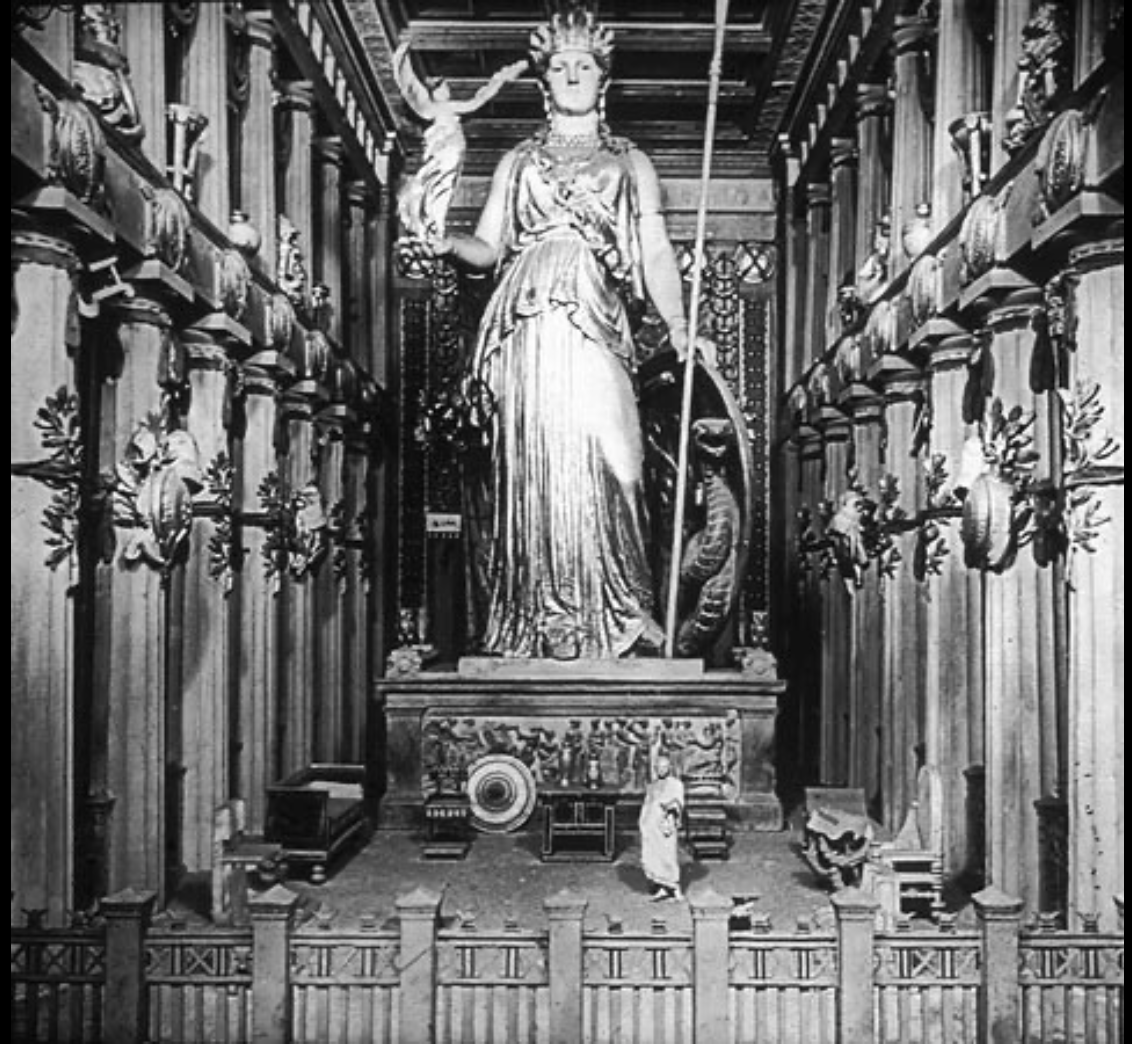
Athens, Acropolis
Parthenon
447 - 432 BCE
Reconstruction of interior of cella
demonstrates monumental chryselephantine statue of Athena Parthenon by Phidias
made of gold and ivory
around 40 ft tall
holds Nike (Victory) on right hand as if offering to Athenian citizen
outer surfaces of golden drapery
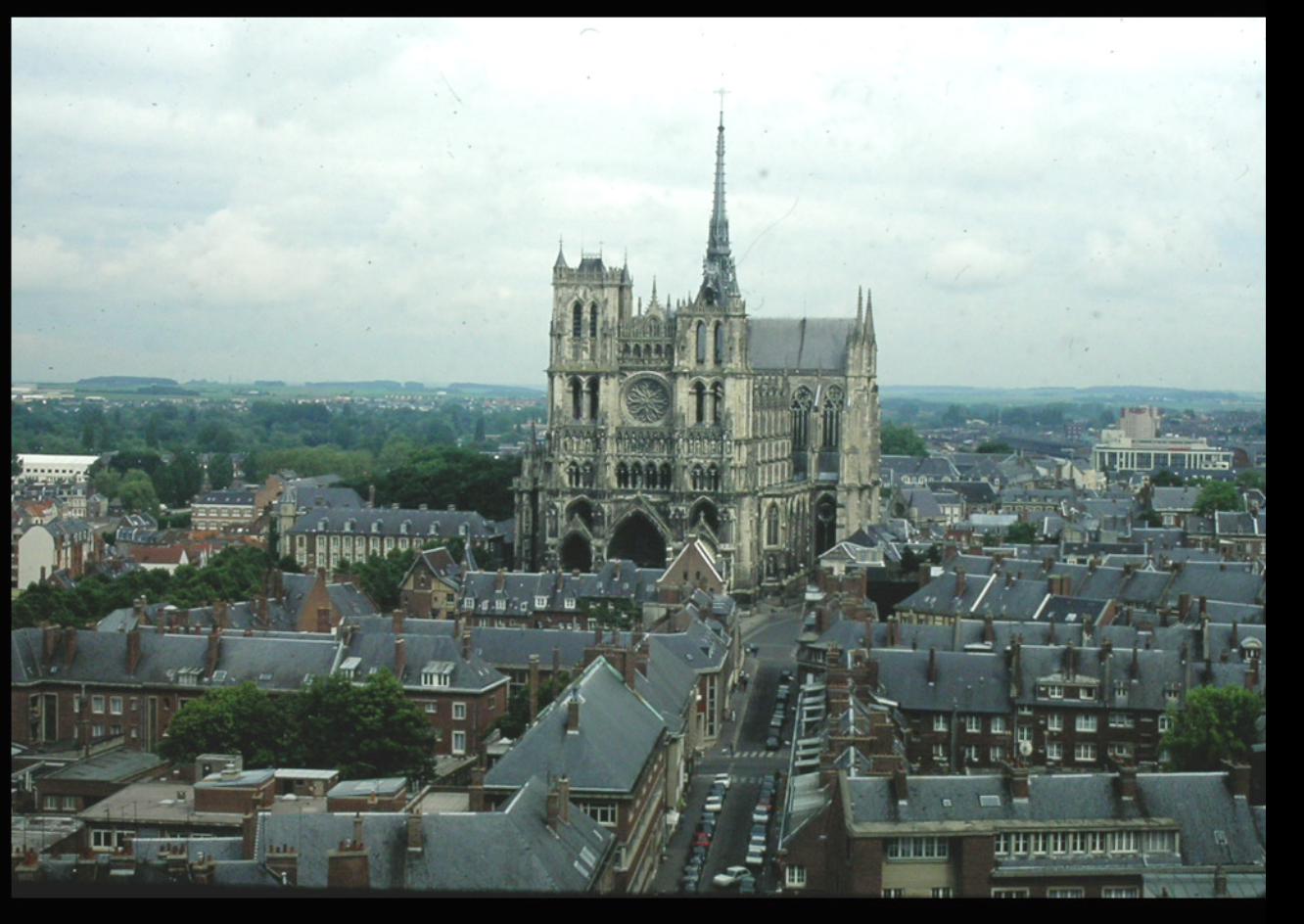
Cathedral of Notre Dame
Architect: Robert de Luzarches
Amiens
1220 - 1269
Gothic Architecture
the top of building is shaped as a cross - sense of divinity
pointed arches, allowing for buildings to be built higher
light is key - lighter than romanesque
light is being sculpted and brought in, and manipulated and naturalized
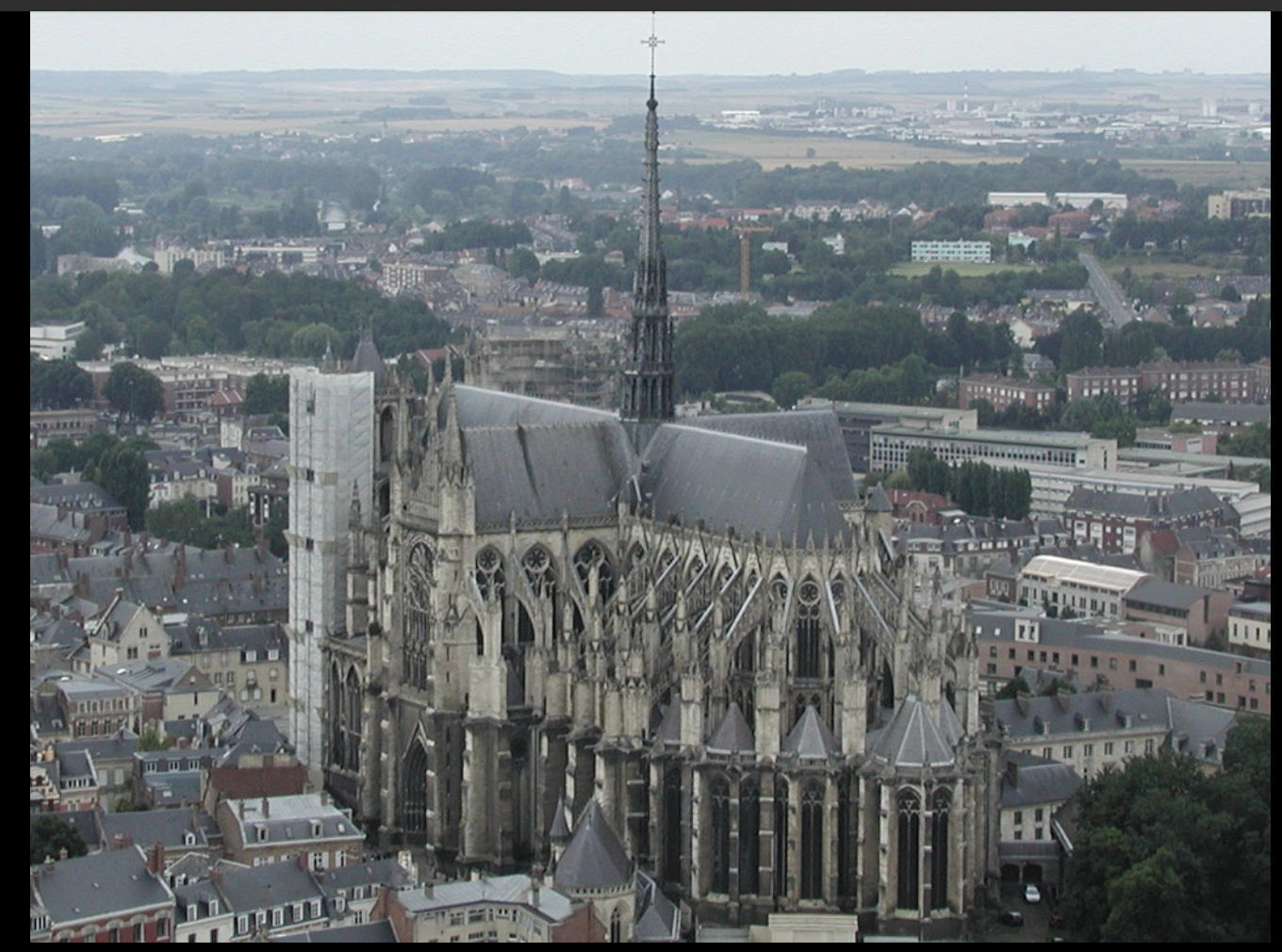
Cathedral of Notre Dame
Architect: Robert de Ljuzarches
Amiens
1220 - 1269
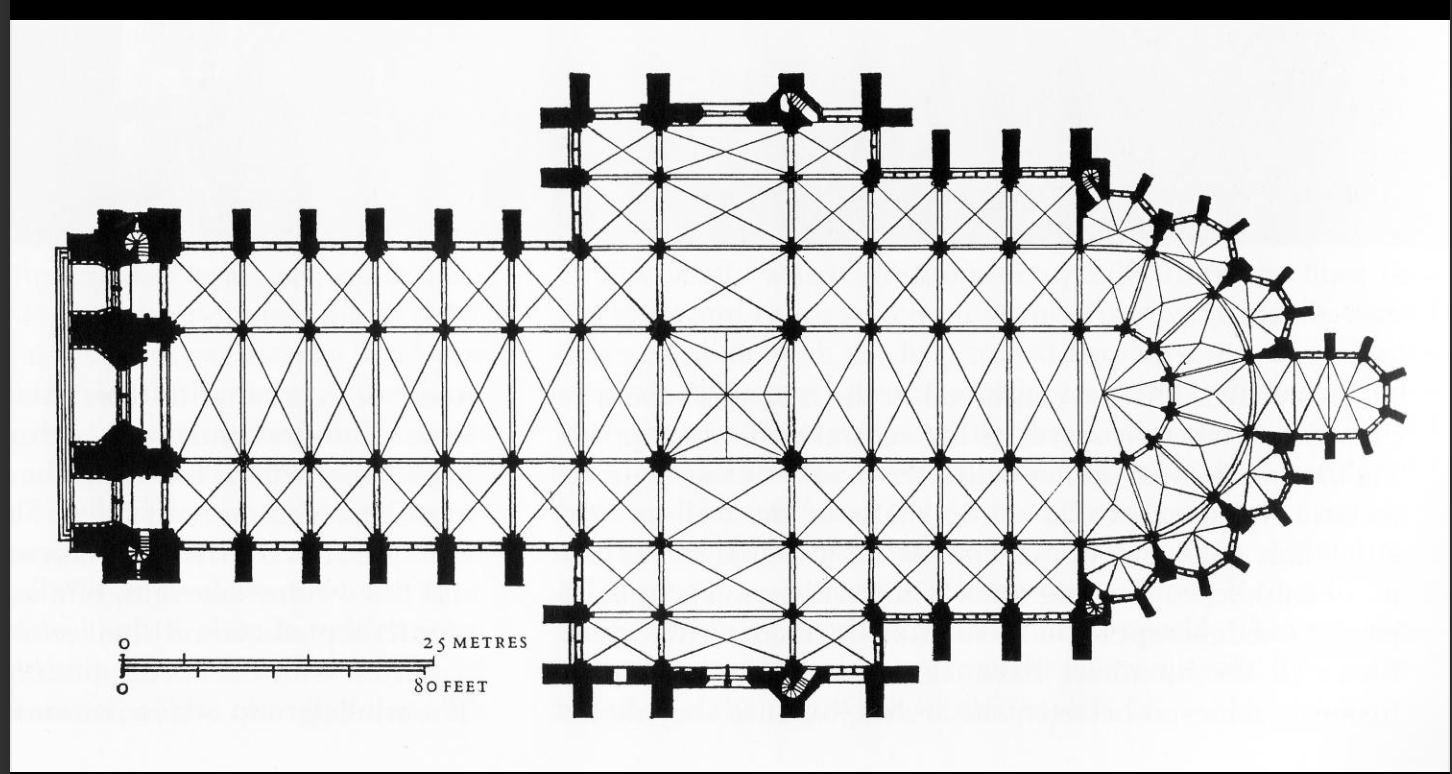
ground plan of Cathedral of Notre Dame
Robert de Luzarches
Amiens
1220 - 1269
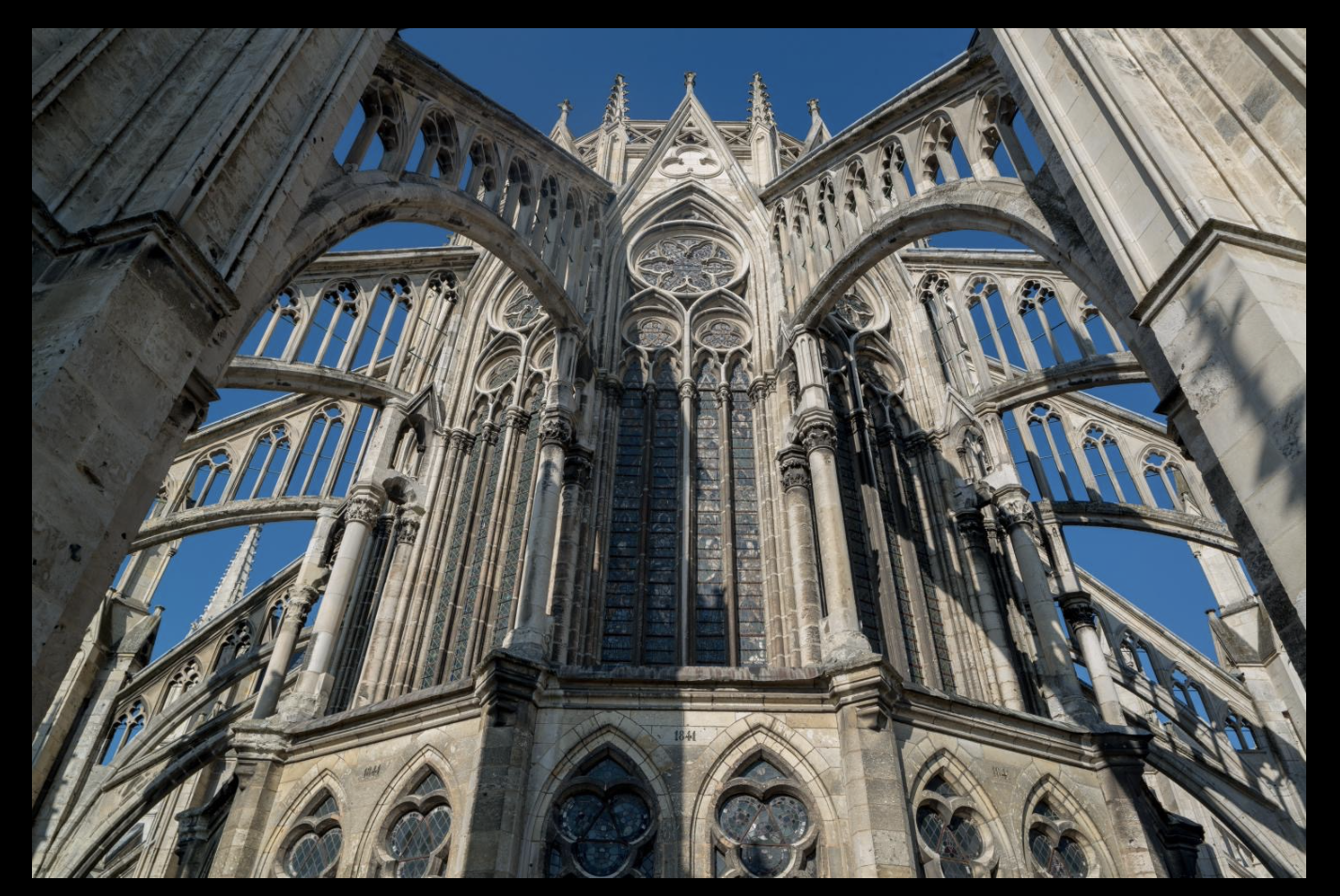
flying buttress and exterior of Cathedral of Notre Dame
Robert de Luzarches
Amiens
1220 - 1269
the actual structural support of the building is being outsourced to the exterior - flying buttress
weight falls onto the weight on the outside
pointed arches pointing up creates a sense of divinity
looking up in the force
the scale makes you look small
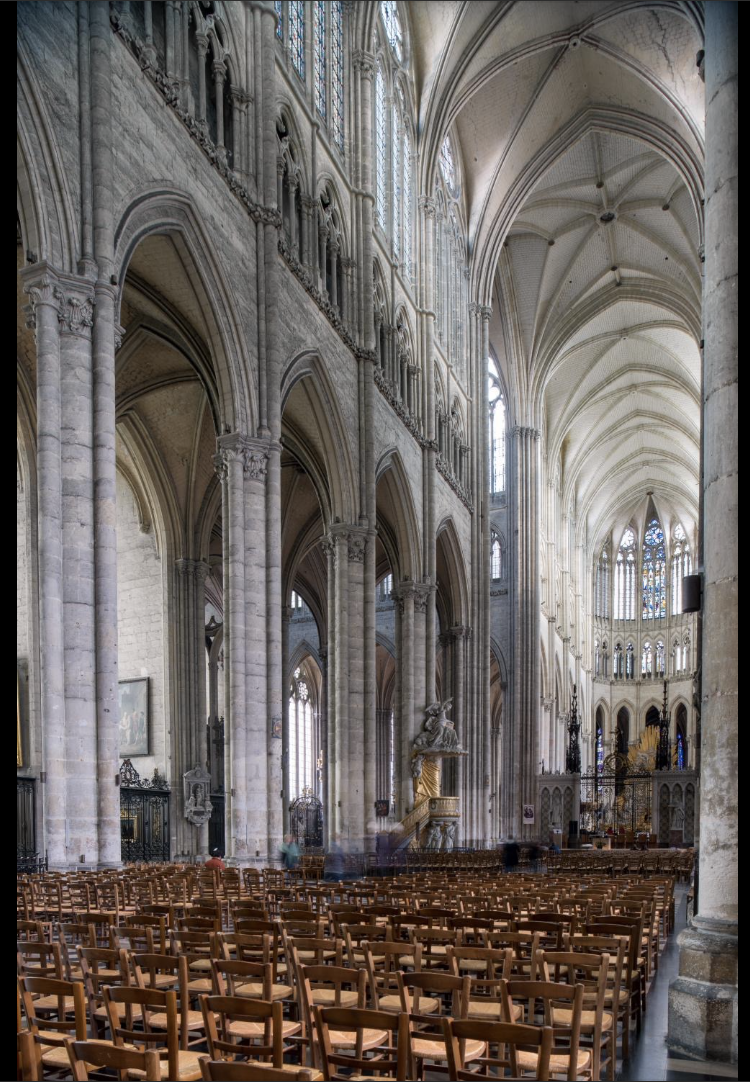
Nave and tripartite elevation of Notre Dame
Robert de Luzarches
Amiens
1220 - 1269
nave - central, large space for congregation
tripartite (bottom to top) - arcade (where pointed arches are), triforium, clerestory (stained glass windows are)
inside is more open and has space in contrast to dense and opaque outside
light is being sculpted and brought in
What are the tripartite
arcade, triforium, clerestory
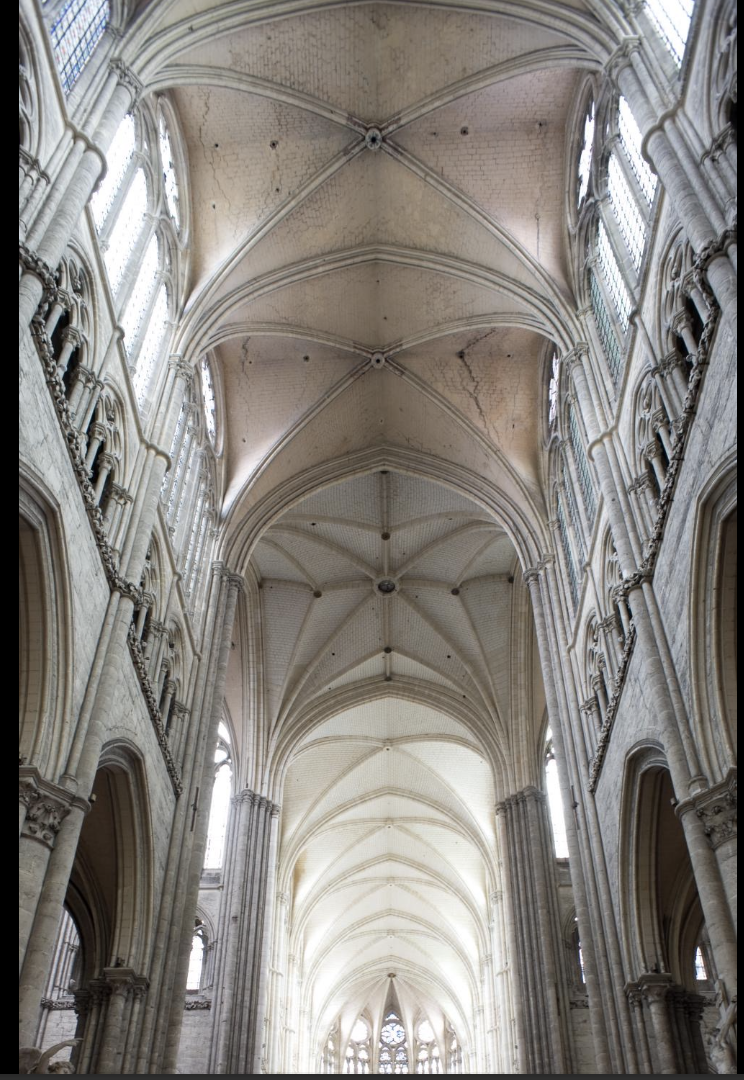
quadripartite vaults of Cathedral of Notre-Dame
Robert de Luzarches
Amiens
1220 - 1269
infinite vertical in height (vertical space)
create open, airy space with a large central area
the Xs on the ceiling
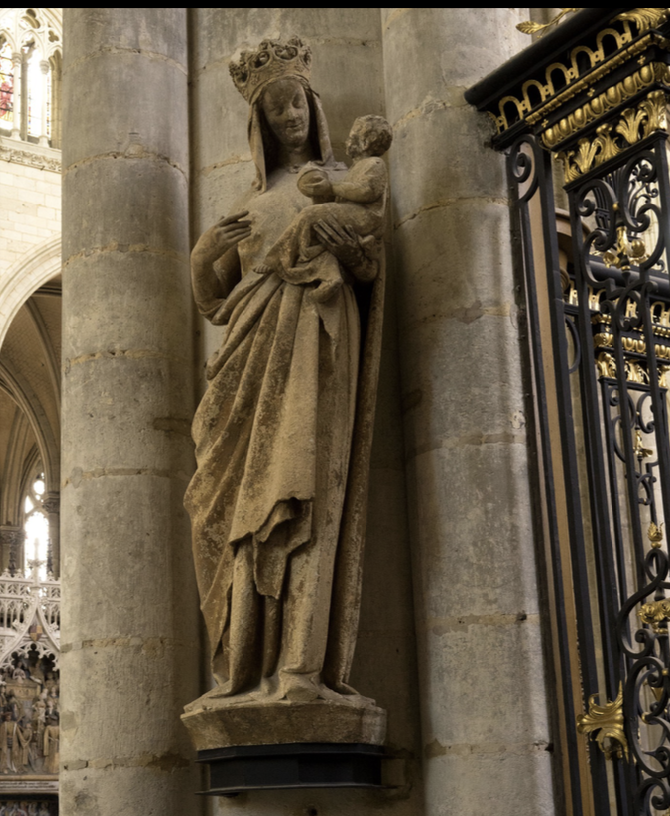
Vierge Doree (Golden Virgen)
ca. 1250
location: south transept portal
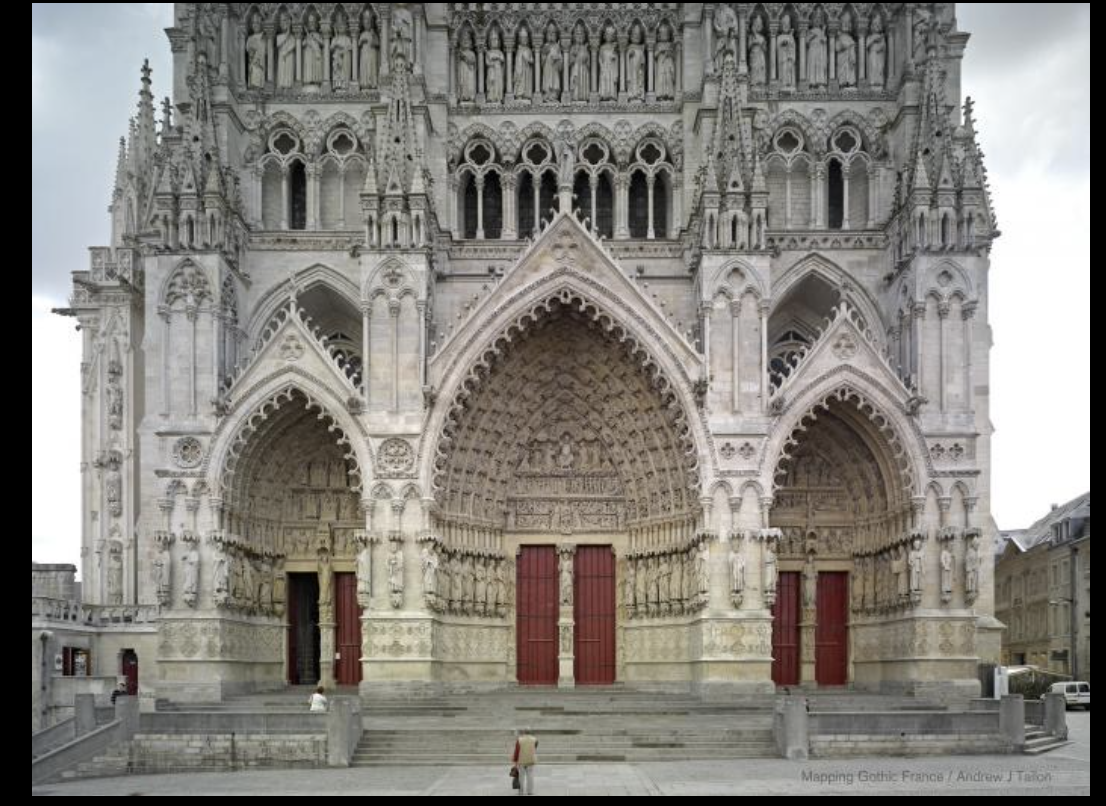
Portals of the Amiens Cathedral of Notre Dame
completed between 1225- 1250
from L to R, Saint Firmin, Last Judgement, Virgin Mary
each portal tells an important christian story
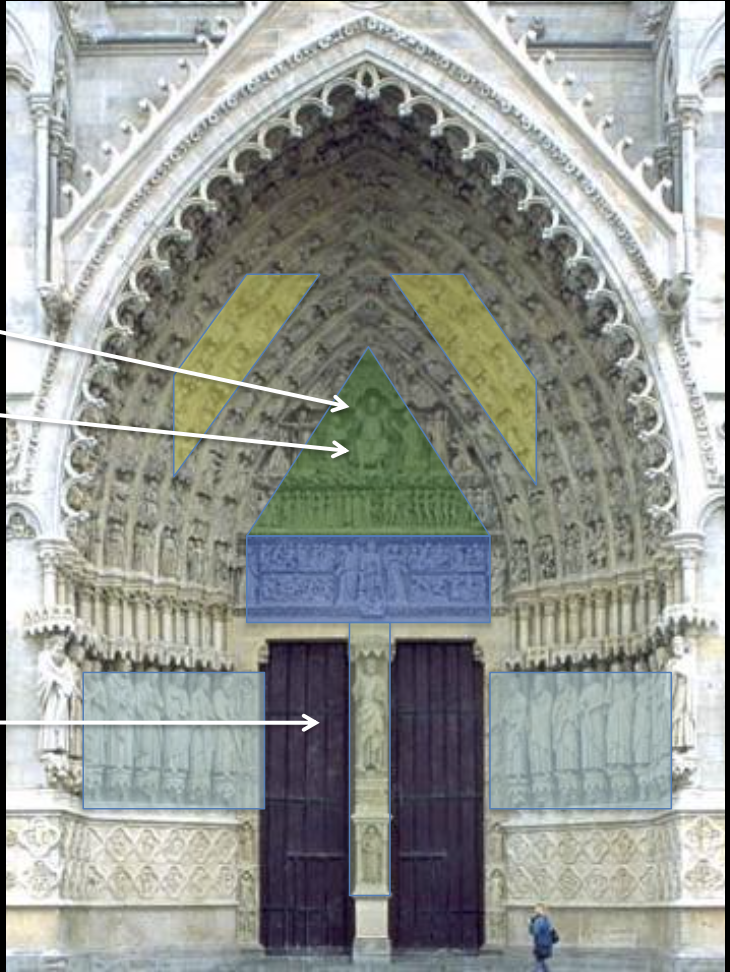
Central Portal: Last Judgment
Yellow - archivolts
Green - tympanum (divide into registers)
Blue - Lintel
Light Blue - Jamb Figures - different saints
Further down not shaded are quatrefoils (virtues and vices)
First Arrow - Apocalyptic Christ w/ two swords coming out of his mouth
Second Arrow - Christ the Judge, presiding over the Last Judgement
sitting between St. John and Vrigin Mary
Third Arrow - Blessing Christ Trumeau
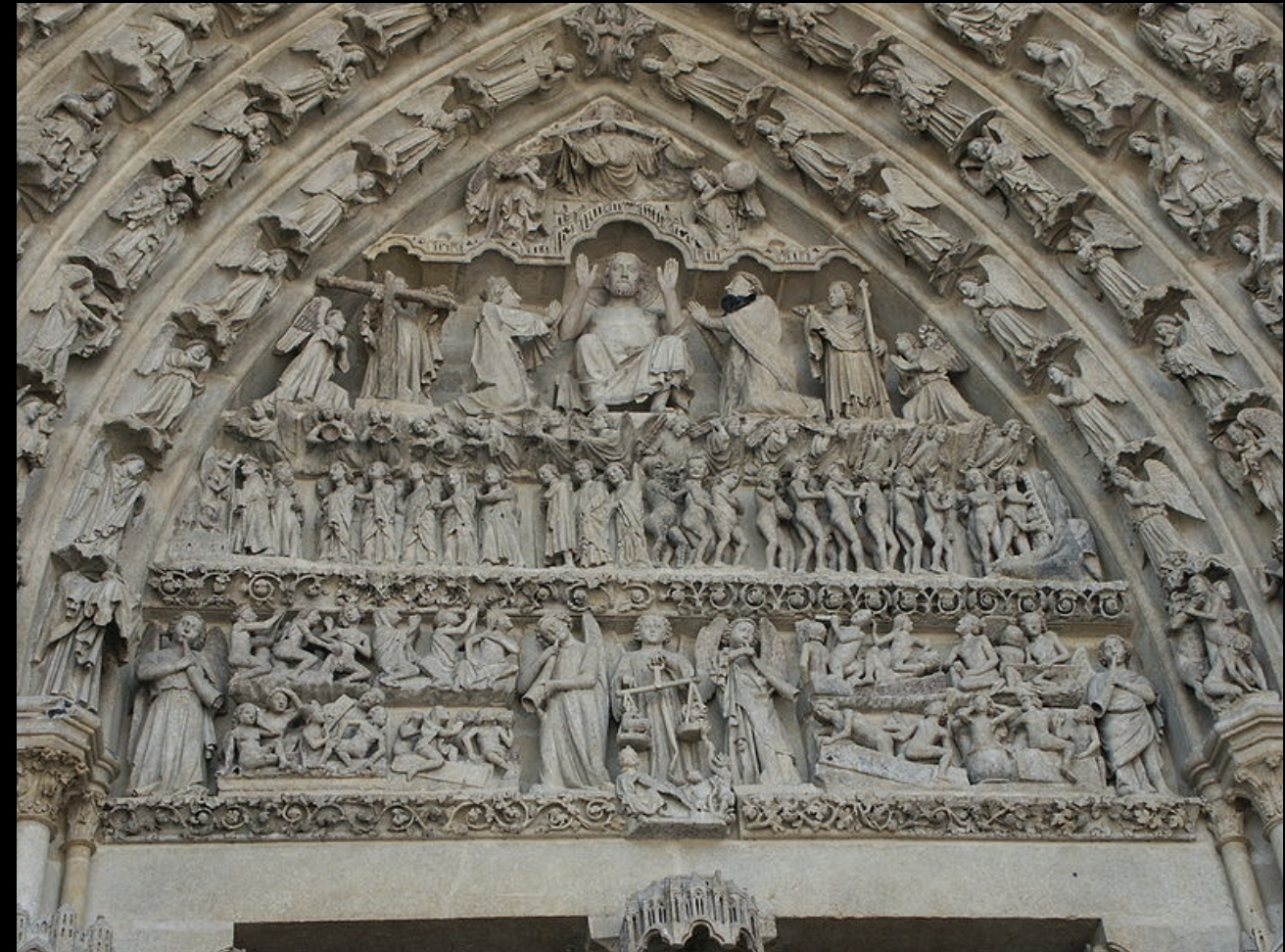
Last Judgement, Amiens Cathedral of Notre-Dame
Central Portal
Completed Between 1225 -1250
sculpted with high degree of realism
heavy drapery
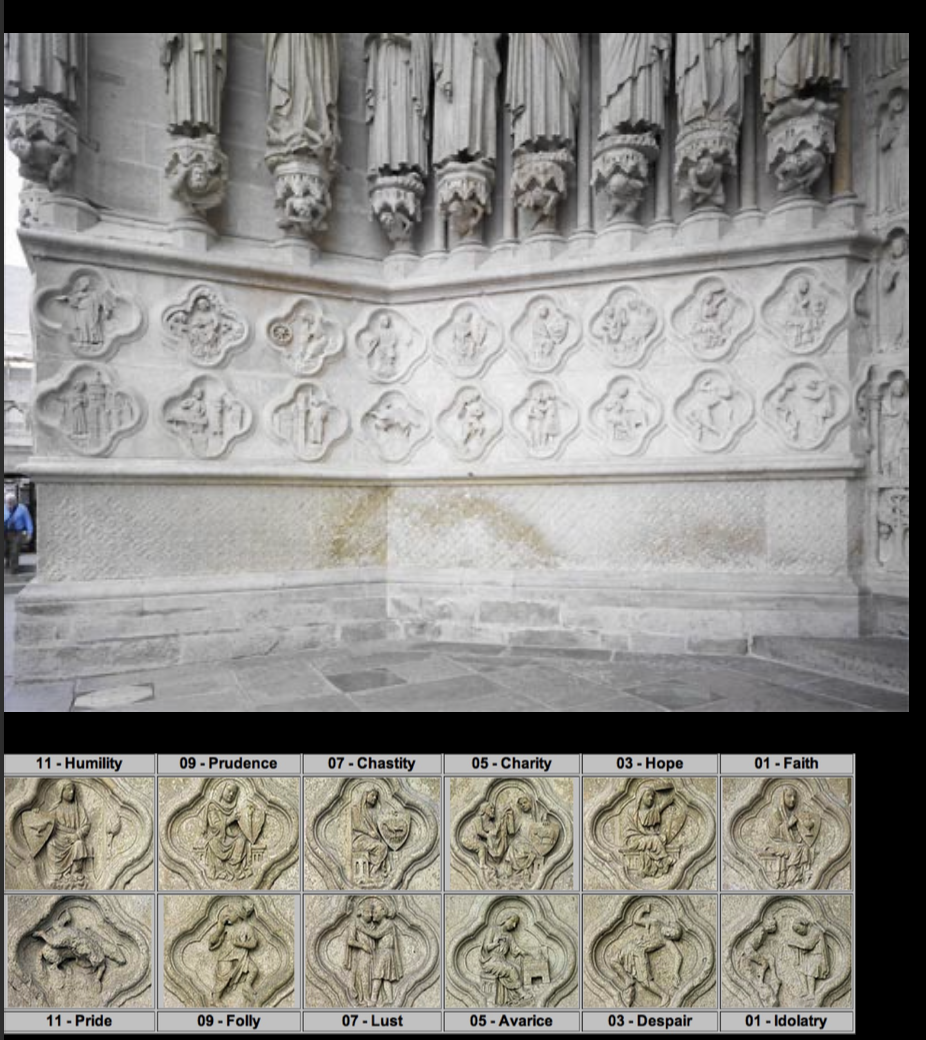
West Facade of Amiens Cathedral of Notre Dame
1220 - 1269
Quatrefoils: Virtues and Vices
presents in pairs
Virtues - represented by seated female figures holding shields
Vices - narrative scenes
suggest to viewer that they can follow life of virtue than life of vice
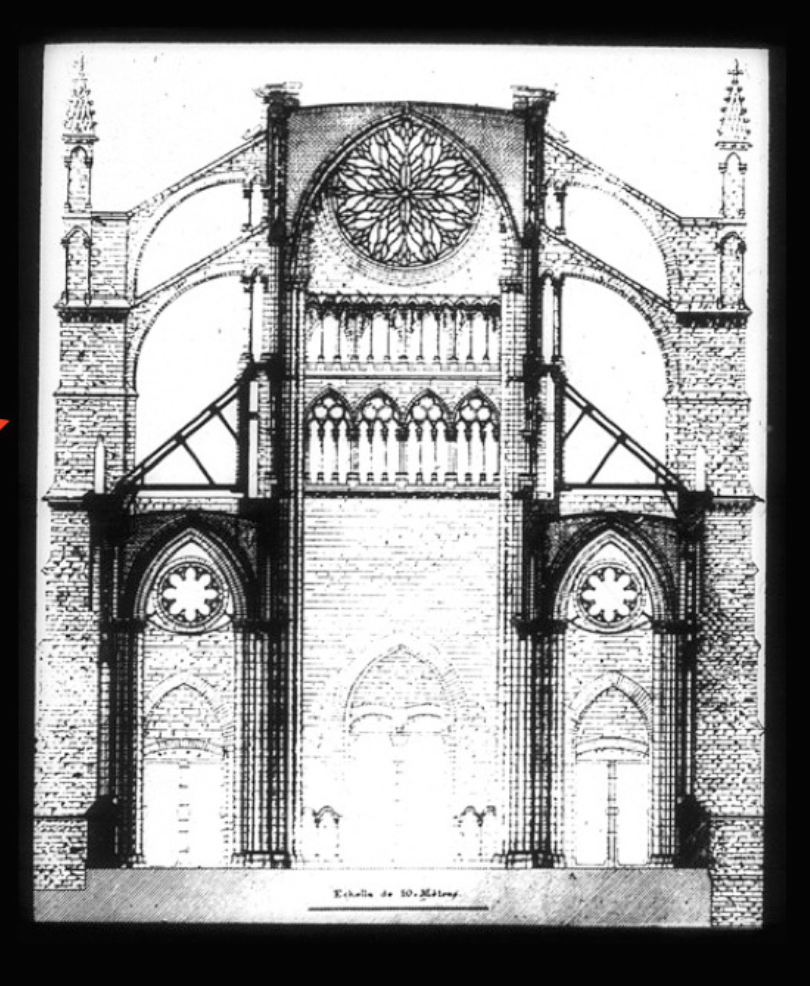
transverse section of the Amiens Cathedral of Notre Dame
1220 - 1269
Robert De Luzarches
shows culées which are massive pylons that launch the flying buttresses
what launches flying buttresses?
culees
Parthenon vs. Notre Dame Cathedral
Parthenon
Post and lintel
on top of a hill, separate of the city
rituals take place outside building
pagan gods; pantheistic
Notre Dame Cathedral
exterior supports: flying buttresses
pointed arches
rituals take place inside in the nave
gothic cathedral within city walls; cathedral is the “hill”
christian gods; monotheistic
Both
have carving of stories on the exterior
What is the Renaissance?
putting classical aesthetics and science of philosophy to the service of the church
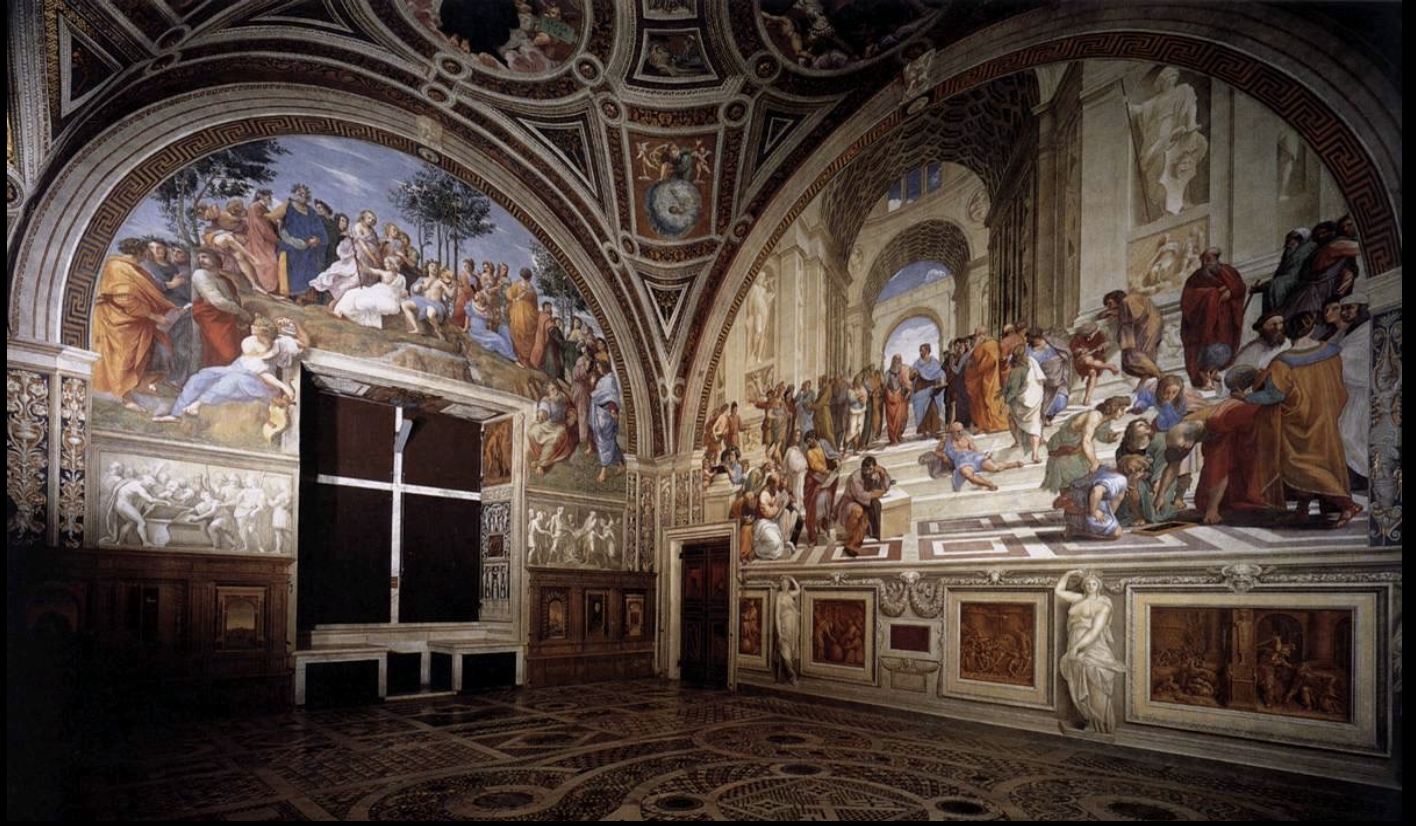
Raphael
View of the Stanza della Segnatura looking towards School of Athens
fresco (1508-1512)
in Vatican Palace, Rome
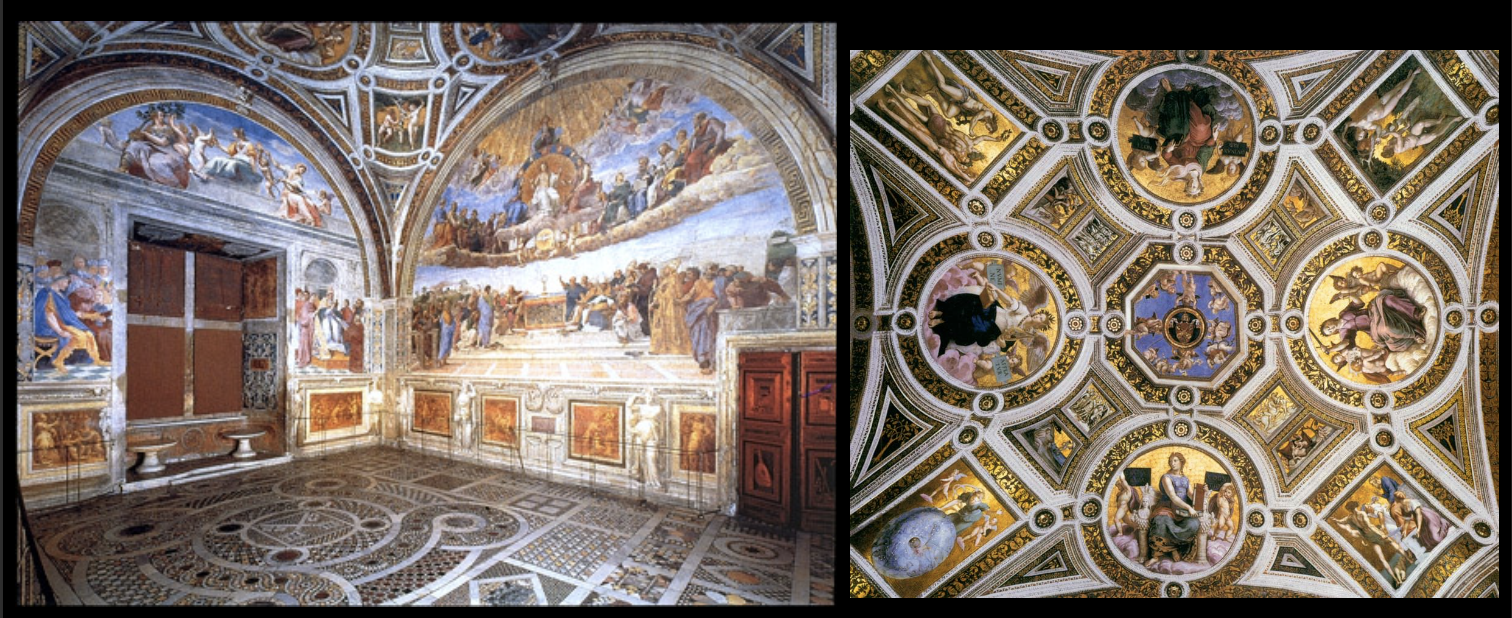
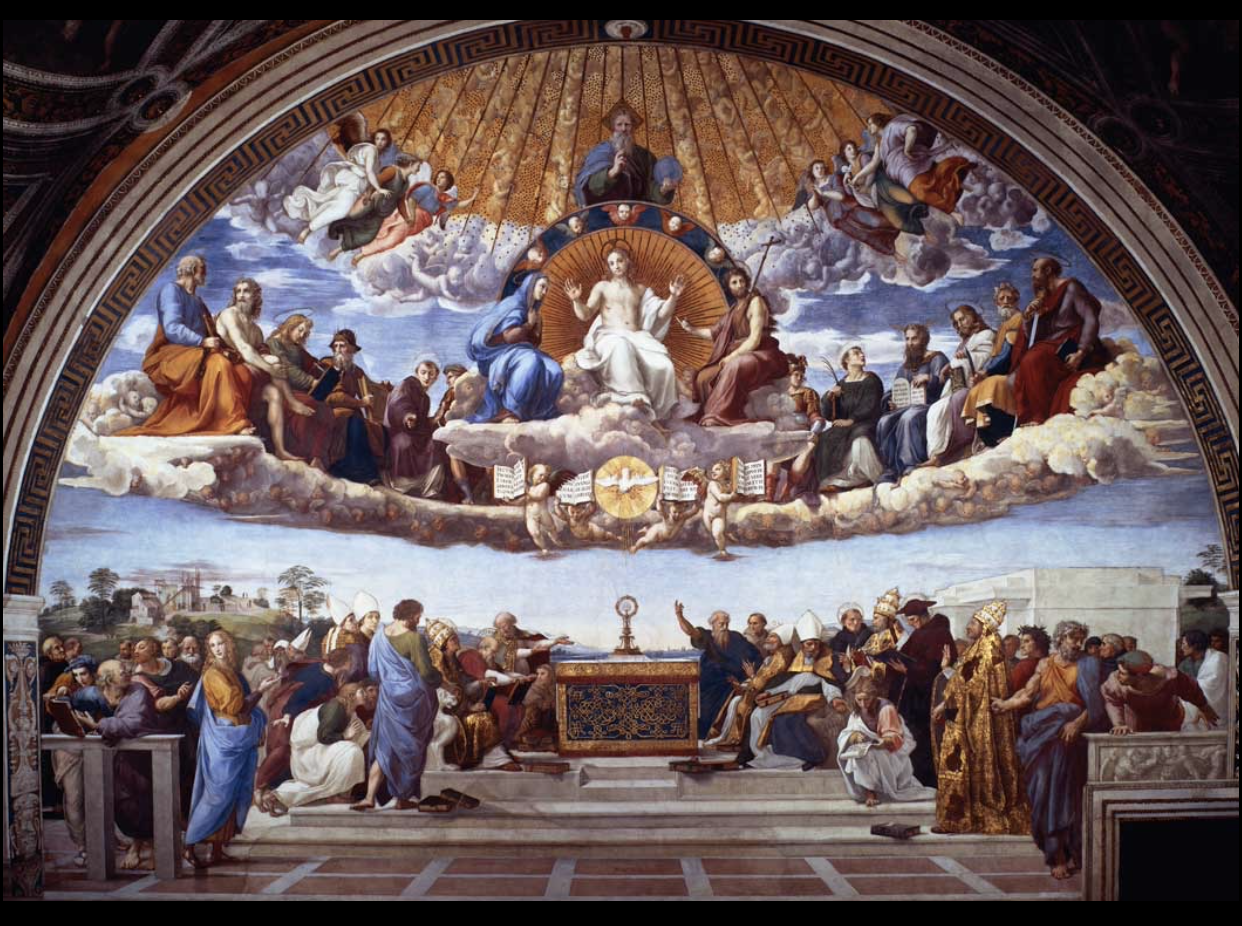
Raphael
Disputa (Disputation of the Eucharist)
1509
circular so everything around it is building the eye to a climatic point of the central part of the piece
the different layers demonstrate a hierarchy
meeting of the celestial and terrestrial in the host (eucharist wafer) itself
eucharist wafer (bread & wine) held in vessel
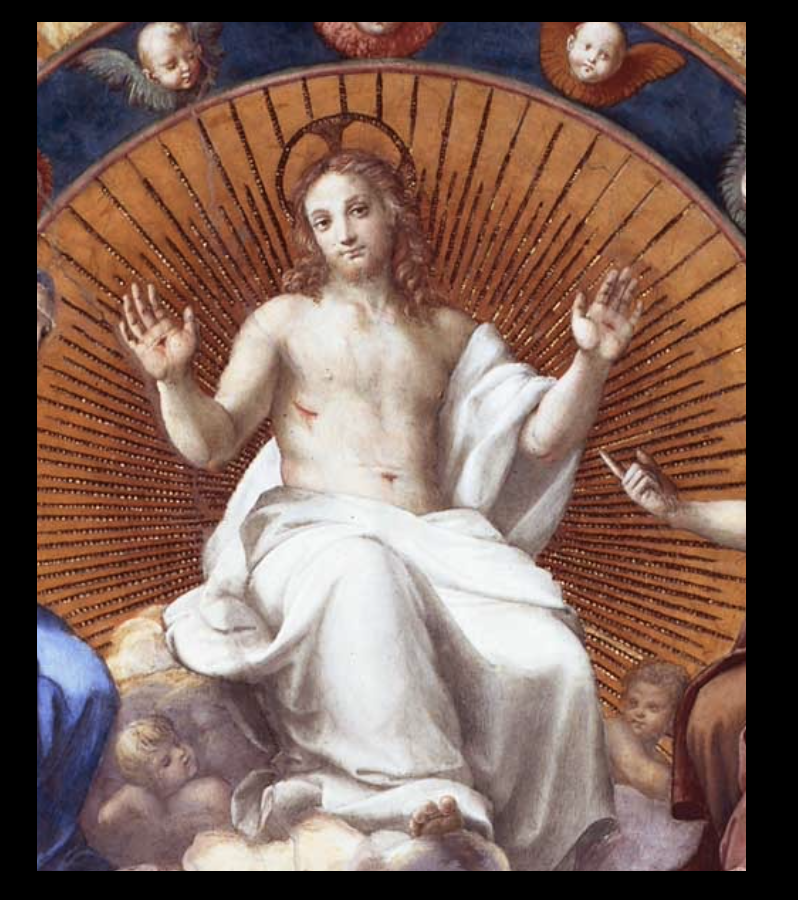
Raphael
1509
Detail of Dispute

Raphael
School of Athens (Philosophy)
1509 - 1510
represents all the greatest mathematicians, philosophers and scientists from classical antiquity gathered together haring their ideas and learning from each other
all lived at different times but are gathered under one roof
Plato and Aristotle in the center
Plato points up - idealist
Aristotle hand down - realist
Michelangelo as Heraclitus the guy who looks depressed on the stairs
arches frame the painting
formally one of the best pieces of perspective ever made
sense of receding space
formal composition of it is what we praise it for
form is what holds all the inconsistencies together
Raphael self portrait in the bottom right corner
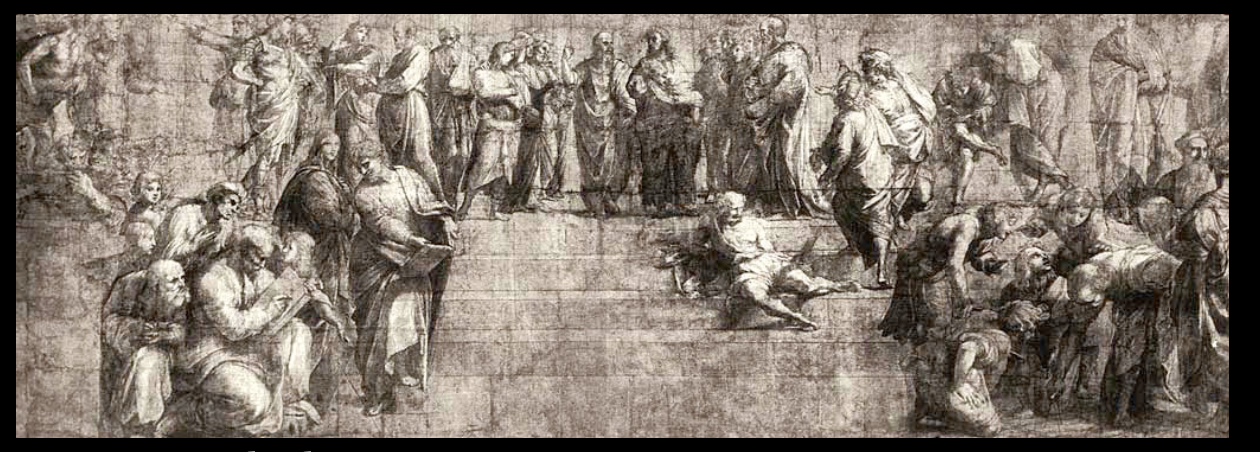
cartoon version of the School of Athens
Raphael
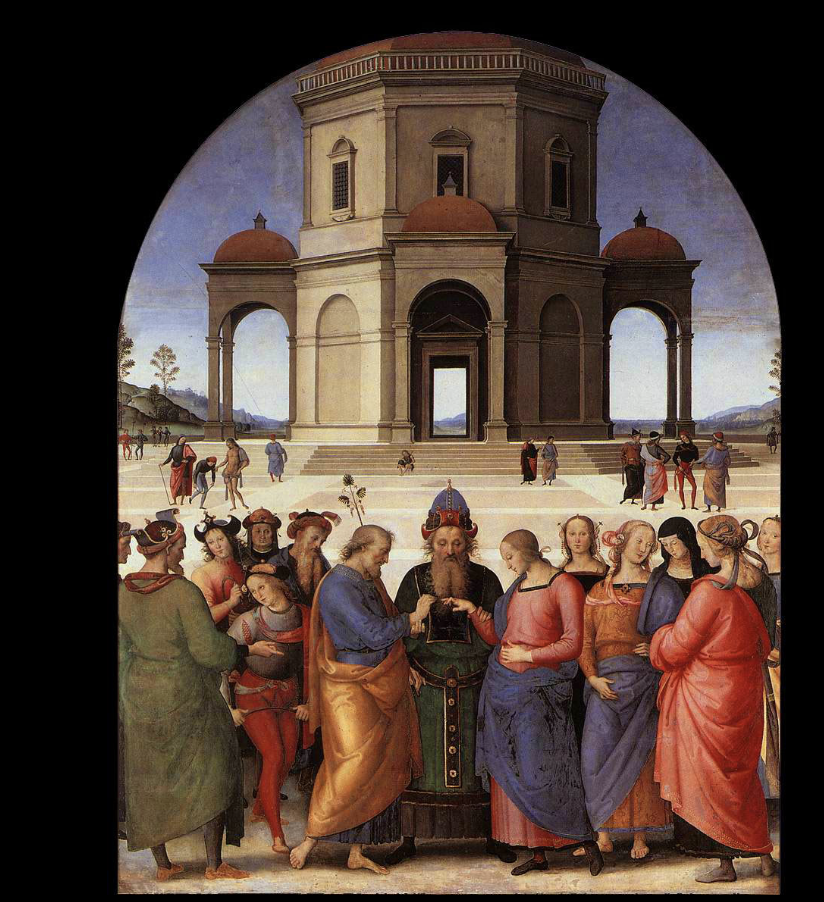
Perugino
Marriage of the Virgin
ca. 1500
static poses
more flattened out
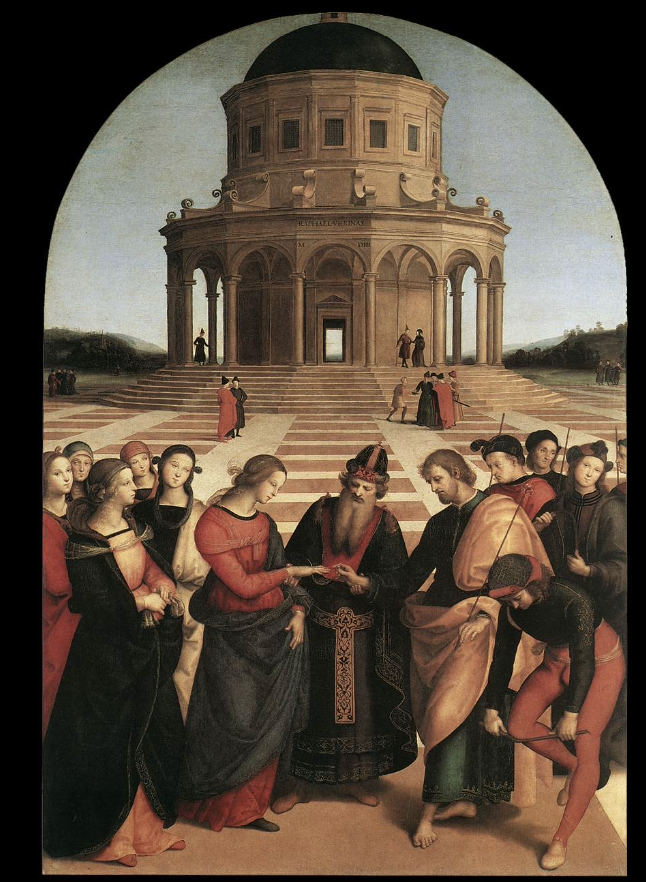
Raphael
Marriage of the Virgin
1504
more natural, graceful way, frames perspective
the door is the vanishing point
painting is organized around that door
lines implies that it moves into that direction infinitely
perspective is about creating an illusion on a 2D flat surface on a receding 3D space
Perugino vs. Raphael Marriage of the Virgin Comparison
Raphael
women left men on right
more detail
deeper perspective
perfectly balances grace and humanity
movements break the staticity of painting without undermining its harmony and balance
Perugino
men on left women on right
static and posed
flat

Filippo Brunelleschi
1387 - 1446
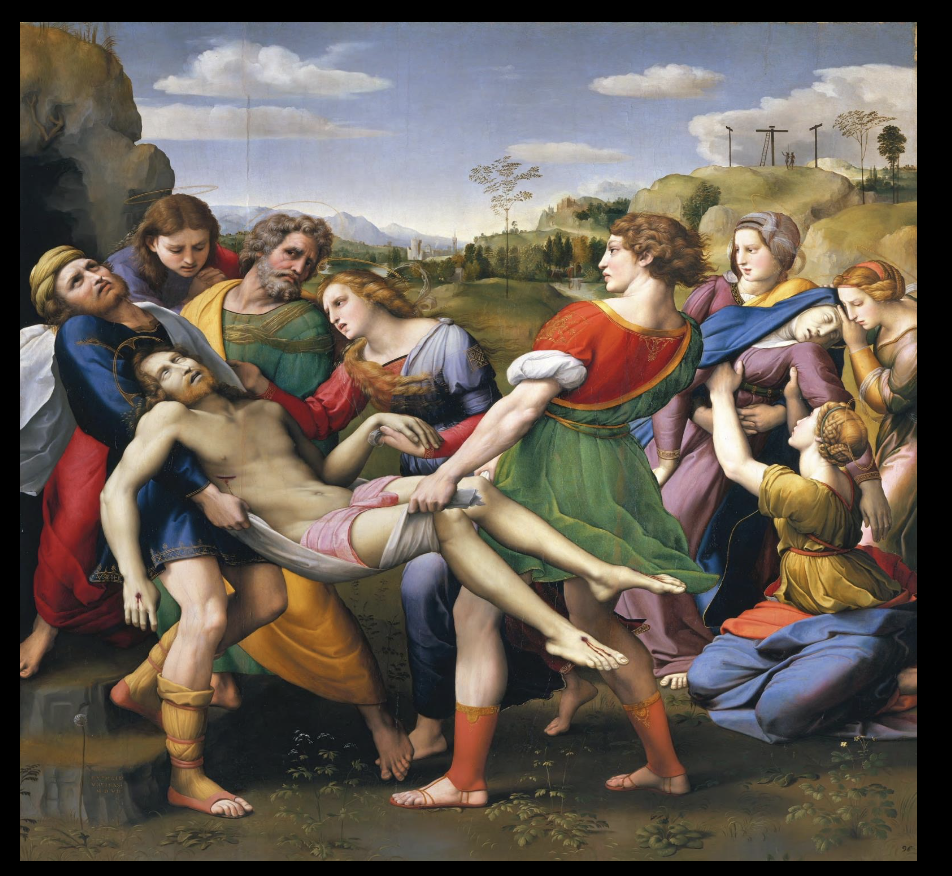
Raphael
Entombent/Deposition
1507
graceful, nature like movements
emotion on faces of pain, sorrow, death
contrasting depictions of Jesus Christ compared to works of other artists
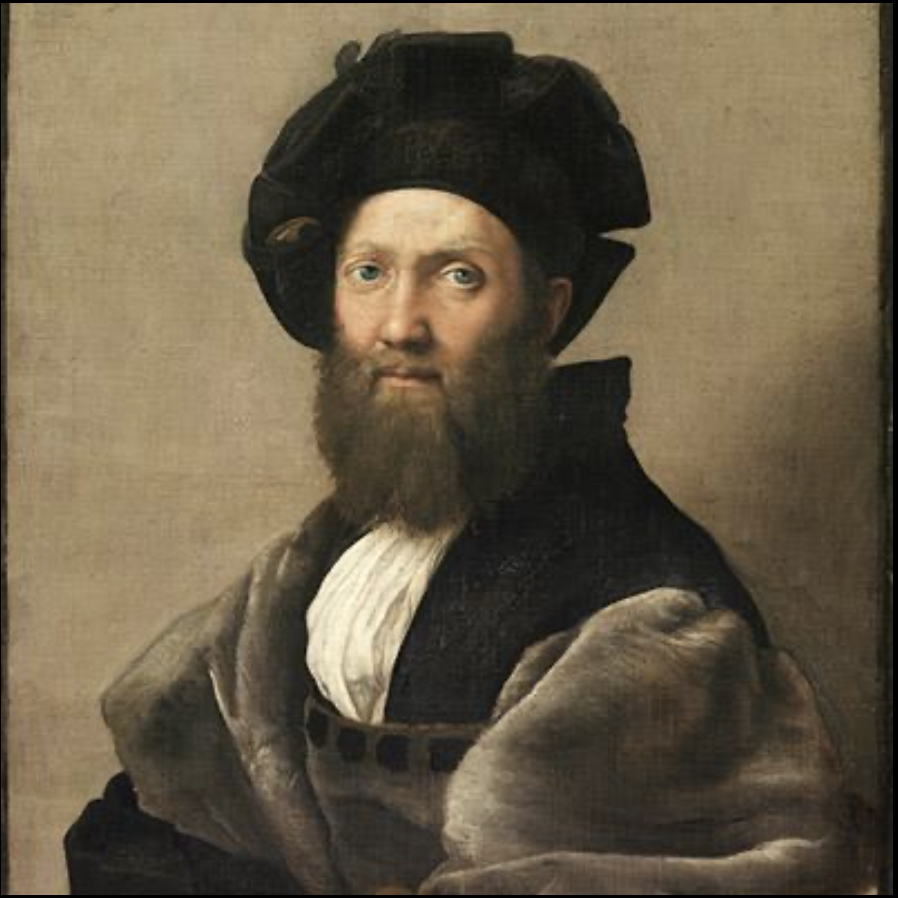
Raphael
Portrait of Baldassare Castiglione
1514-1515
¾ profile and gaze fixed on the artist
we looking at him are outsiders
similar to Mona Lisa
there is a soft luminescence of light in the background
circular forms of the turban
sitting on arm chair but cut off hands, which helps focuses attention on the face and intense gaze
there is a simplicity of the colors of costume and soft-lit background
painted during winter because of fur
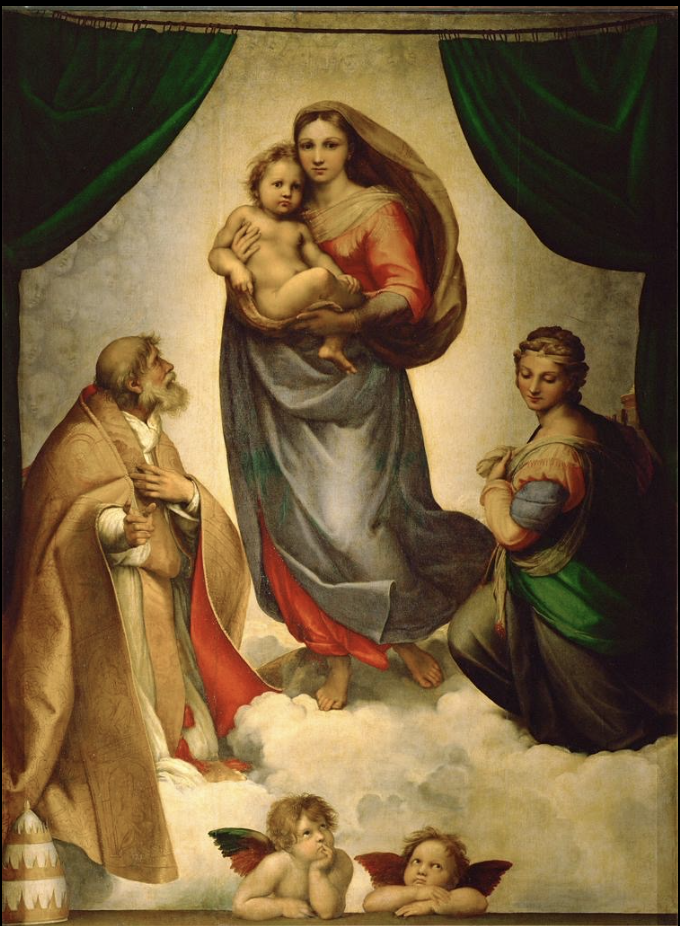
Raphael
Sistine Madonna
1512-1513
Renaissance
the two kids sitting on the windowsill are puttis
self commenting on the fact that it’s an illusionistic space
signifying the allusion of a window
there is a classical triangular arrangement
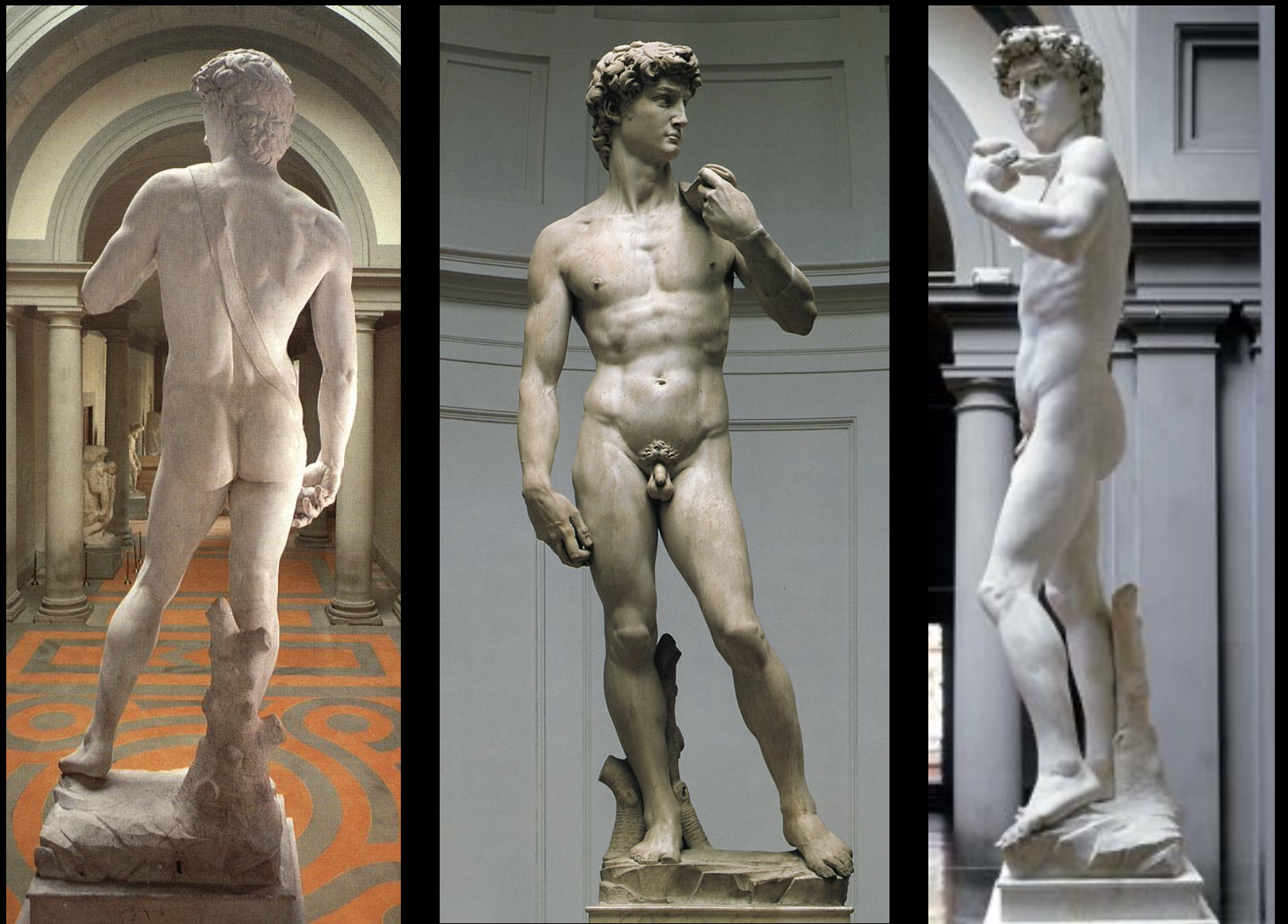
David
Michelangelo
1501- 1504
Contrapposto
way of naturalizing body
Michelangelo idealizes himself as an artist
Subtractive process from chiseling away from one block of giant marble
horizontal and vertical axis is implied that it’s carved from a single block
releasing the soul of the block
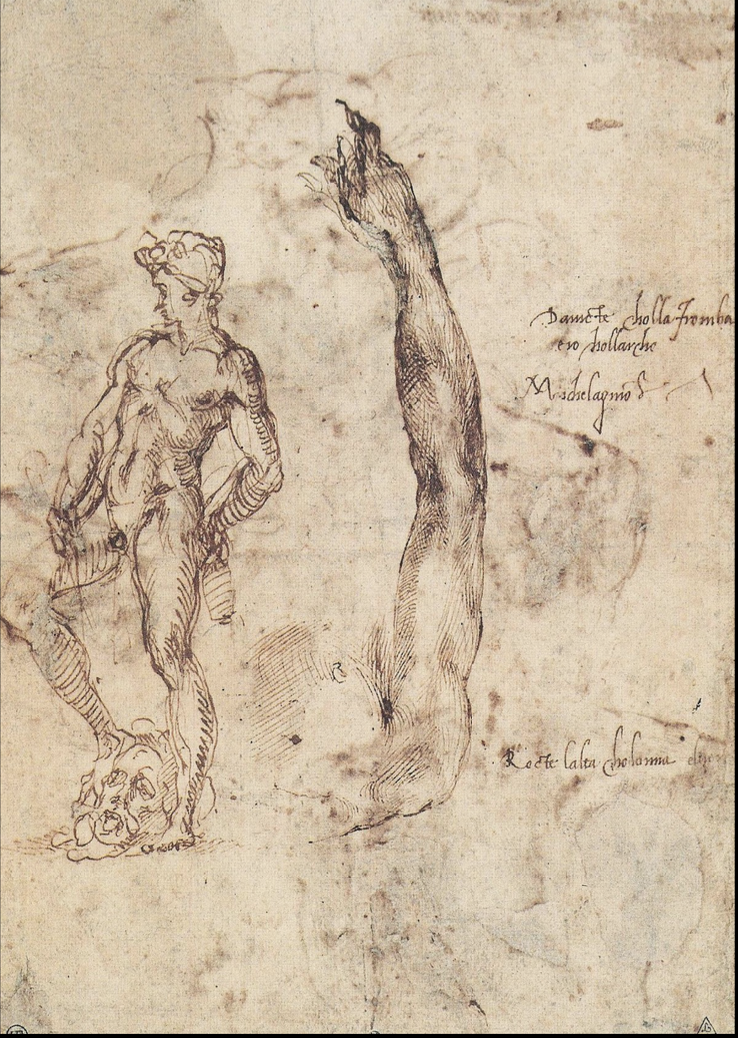
Michelangelo
Sheet with verses and studies for David
1501
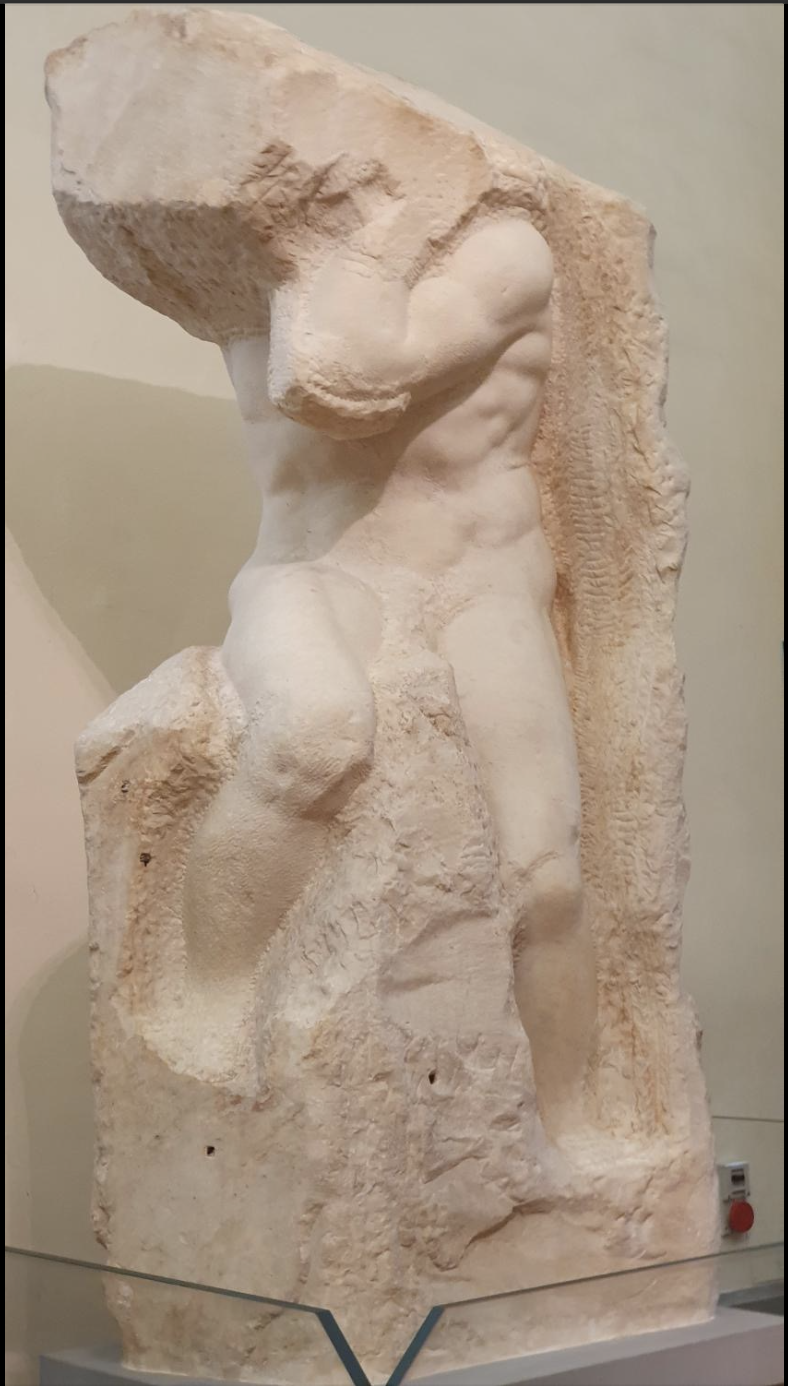
Michelangelo
Atlas Prisoner
1530-1534
demonstrates subtractive sculptural process
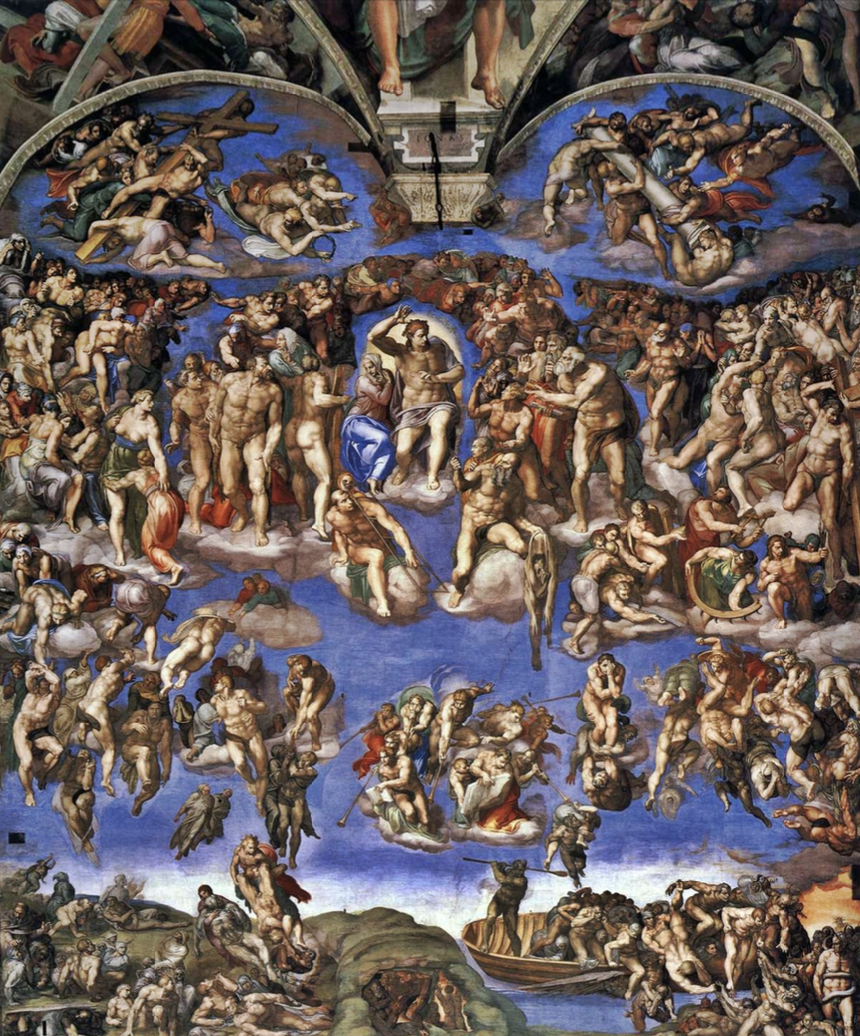
Michelangelo
The Last Judgement
1534-41
fresco, Vatican, Sistine Chapel
disegno: all different bodies hold their own space
all radiate own center, as if they are all on their own sheet of paper
relates to aesthetic bodies
the face of the flayed skin that St. Bartholomew holds is a self-portrait
top - those who go to heaven
bottom - those who go to hell

Michelangelo
Creation of Man
1508-1512
Michelangelo is about the divine spark
the spark that helps you become divine, creating life
the fact that the two peopler not touching demonstrates a heavy desire
idealized body of Adam

Michelangelo
Pieta
1498-1500
idealized
emphasizes mourning of Mary
there is draping of the body to disguise her exact proportions
helps convince audience of how she can hold a grown man in her lap
anatomy of christ still preserved
much more emaciated in anonymous pieta
Christ position similar to Raphael, Entombment
this one is more placid, serene, strong face of Mary compared to the anonymous Pieta w/ extreme emotions
What are some key characteristics of Sofonisba?
strong female artist in Renaissance
signed her work as Virgo
Feminism
Signifies Virginity
did many portraits
cares about posture and how it signifies class relations

Michelangelo
Cleopatra
1530
a gift to men he was attracted to
not an idealized man like David for when he was commissioned

Sofinisba
Portrait of Amilcare, Minerva, and Asdrubale Anguissola
1559
collection of different postures
the family is a unit
produces an enclosure of family
a unit that builds a family

Sofonisba
The Chess Game
1555
the three girls are not looking at the chess board
Game of chess creates inside and outside
what’s happening in the game vs. what is not happening in the game
Feminism
chess is a game of strategy and intellect often associated with upper echelons of society and men
a lot of different textures with jewelry, necklaces, headbands, gold chains, etc.
far left girl returning our gaze as if we are interrupting the scene

Sofonisba
Boy Bitten by a Crayfish
1554
her relation to Michelangelo
knew each other, wrote letters to each other
Michelangelo was originally shown her drawing of a laughing girl and said crying boy would be more difficult
so sent this

Sofonisba
Portrait of Massimiliano Stampa, Marquess of Soncino
1557
exploding hot dog
she’s critical
demonstrating artificiality
body and posture and how it relates to class relations
eyes are disproportionate, unnatural
the boy’s posture demonstrates
body is upper middle class
not royalty but is of higher echelon
the hand on the left holding silk gloves — status

Sofonisba
Self-Portrait at the Easel
1556
her gaze creates inside vs. outside, as we are the outsiders looking in watching her paint, she stares out at us, like we are an imposition, interrupting her work
she is dressed modestly and simply
and demonstrates versatility through both as a portrait and sacred art of Virgin Mary and Jesus
demonstrates ability to work with both light and shadow
Sofonisba reproduces herself
she’s just focusing on her body and not projecting an ideal fantasy
What is the Baroque?
grandiosity, the counter-reformation
pushed against censorship of the reformation which is the motive that is creating all of these works
allegory
story that says something larger than itself
disruptive
always diagonal

Bernini
David
1623
diagonal
additive, not carved from single block
put together with struts, flaunting the ideal of illusionism
in the midst of action with more emotion on his face
lips pursed -tension
focused and determined
does not see the enemy, there is a blind spot in the narrative
folds because look through curved space and implies infinite

Bernini
Apollo and Daphne
1622-25
during midst of action
mixing the real and representational
splitting the senses
sees flesh of Daphne but feels the tree bark
angle of approach
from back of Apollo to daphne’s bark and body
demonstrating to audience witnessing the transformation
flaunting illusionism, doesn’t care about realism
polished white stone a certain way that implied color

Bernini
Ecstasy of St. Theresa
1647-52

Bernini
Ecstasy of St. Theresa
1647-1652
sculpture but oriented as a painting
read whole space like you are looking at a painting
additive
exploding singular block/medium
diagonal
folds that demonstrate infinite
could be seen as flowing upwards and visual evidence of levitation
Connect the foot hand and face to create naked body underneath the folds
more sexualized and erotic charge
foot fetish, curling of the toes

Cornaro Chapel where the Ecstasy of St. Theresa is located
1647-52

Bernini
Piazza before St. Peter’s Basilica
1656-1667
circular space always about holy space
trapezoid brings the church up front
Doric Columns are set one floor lower than the actual church to make the church look bigger
Although slightly different, playing with optical effects same way as Parthenon

Bernini
piazza before St. Peter’s Basilica
1656-1667

Bernini
Piazza before St. Peter’s Basilica
1656 - 1667

Bernini
The Baldacchino
1624 - 1633
bronze canopy that created illusion of of cloth which speaks to Bernini’s belief in illusionism
combined baroque elements
gigantic twisted columns
sculpture in center similar to ecstasy of st. Theresa where read sculpture like painting

Luisa Roldan
St. Michael and the Devil
c. 1692
Spanish baroque is continuation of what is happening of medieval times
Baroque
because intricate details, character, emotions
Exaggerated colors
sense of hierarchy where saint stomping on devil
pieces meant to be moved around in contrast to Bernini’s where people move around the piece

Luisa Roldan
St. Michael and the Devil
1692

Detail of St. Michael and the Devil
1692

Luisa Roldán
Jesus Carrying the Cross
1692-1700
different elements
robe, chain, slab of wood
emphasized Jesus’s humanity
connecting human to god
personal pain
you can see the glory from far away with the gold from the robe, but the gory and pain bits can be only seen up close

Luisa Roldán
The Ecstasy of Mary Magdalene
1690
diagonal
color
private devotional object - something you would have in your room and you would pray
putti adds angelic spirit